- Pontoon Boats
- Privacy Policy


What Should a Sailboat Operator Do When Approaching a PWC Head-on?
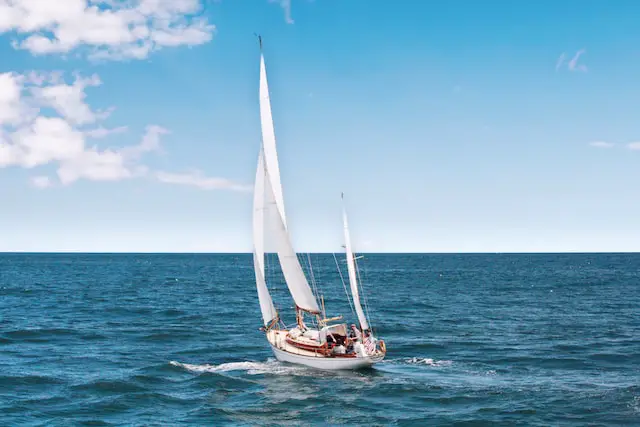
Boatgroot is reader-supported. When you buy through links on our site, we may earn an affiliate commission.
Crossing boats is a tricky situation that requires extraordinary attention from both operators. One inch here or there, your vessel can sustain big damage while crossing another.
Unlike on the road, where there are designated rules and lines to follow, water is an unknown territory, and maneuvering a boat requires a deep understanding of rules, decision-making skills, and quick thinking. It is up to the boat operators to communicate and work together to ensure a safe crossing.
Today, we are discussing what actions a sailboat operator does when crossing a PWC (Personal Watercraft). These two types of watercraft have varying sizes, shapes, and modes of operation, with a PWC typically requiring a rider such as a jet ski or water scooter.
Let’s move further and talk about the topic in detail.
Crossing Paths With Another Boat? What To Expect
What should boat operators do.
Navigating a sailboat and PWC through each other can be challenging due to their contrasting features, mainly their size, and speed. Sailboats are generally larger and slower than PWC, which can make them difficult to operate, less maneuverable, and more susceptible to collisions. In contrast, PWC are fast-moving water crafts that can cause operators to lose situational awareness and increase their risk of accidents.
To avoid this situation, it is crucial for sailboat operators to take precautions when approaching a PWC head-on. Let’s take a look at some essential factors to consider before taking appropriate actions.
Navigation Skills
The primary step in approaching a PWC head-on with a sailboat is maintaining a safe distance and promptly reducing speed. Sailboats can be difficult to maneuver due to their size and shape, and reducing speed provides additional time to evaluate the situation and make informed decisions when crossing paths with other vessels.
Please refer to this video to learn more about navigation rules and skills:
The Importance of Communication
Effective communication between sailboat operators and PWC operators is key to avoiding collisions. Sailboat operators should use visual and audible signals to alert PWC operators of their presence and intention to avoid a collision. Some effective communication methods include:
1. Make Noise/Use Horn or Whistle
Sailboat operators should sound a horn or whistle to alert PWC operators of their presence.
2. Hand Signals
Hand signals should be used to communicate the intentions and position to PWC operators. For example, pointing to the left or right can indicate which direction the sailboat is turning. You can also use hand gestures to ask other vessels to stop or make way for you.
3. Communication Channels
Sailboat operators can connect with PWC operators nearby via a VHF radio or other communication devices. Channel 16 is the international hailing and distress frequency to establish contact and communicate their intentions.
Local Rules and Regulations
Before entering a remote location, it is essential to contact the local marine authorities to learn about the regulations governing the area. These rules are designed to promote vessel safety and ensure that all boaters comply with local waterway regulations. In the United States, the Coast Guard Navigation Rules COLREGS establish regulations for safe navigation and collision, as well as guidelines for crossing and overtaking.
Here are some important rules to remember:
Here is a small video guide that will make things more clear for you:
This article provides guidance on the appropriate measures to take when approaching a PWC head-on. Approaching another vessel at sea is akin to approaching an unmarked intersection on the road, requiring adherence to specific guidelines to prevent collisions. To avoid accidents, it is necessary to follow basic regulations. In this case, the sailboat operator should maintain their current speed and course while the PWC should maneuver to avoid the sailboat, given its limited maneuverability.
LEAVE A REPLY Cancel reply
Save my name, email, and website in this browser for the next time I comment.

When Can Navigation Rules Be Overlooked – A Thorough Guide

White Buoy With an Orange Square and Black Lettering Meaning

When Returning From Open Sea and You See a Red Buoy,...

Which Safety Precaution Should Be Taken First by a Boat Operator...

What Should You Do if You See a Buoy With Red...
- Terms & Conditions
- Cookie Policy

Safety Tips: How to Navigate when a Sailboat Crosses Paths with a PWC
Alex Morgan
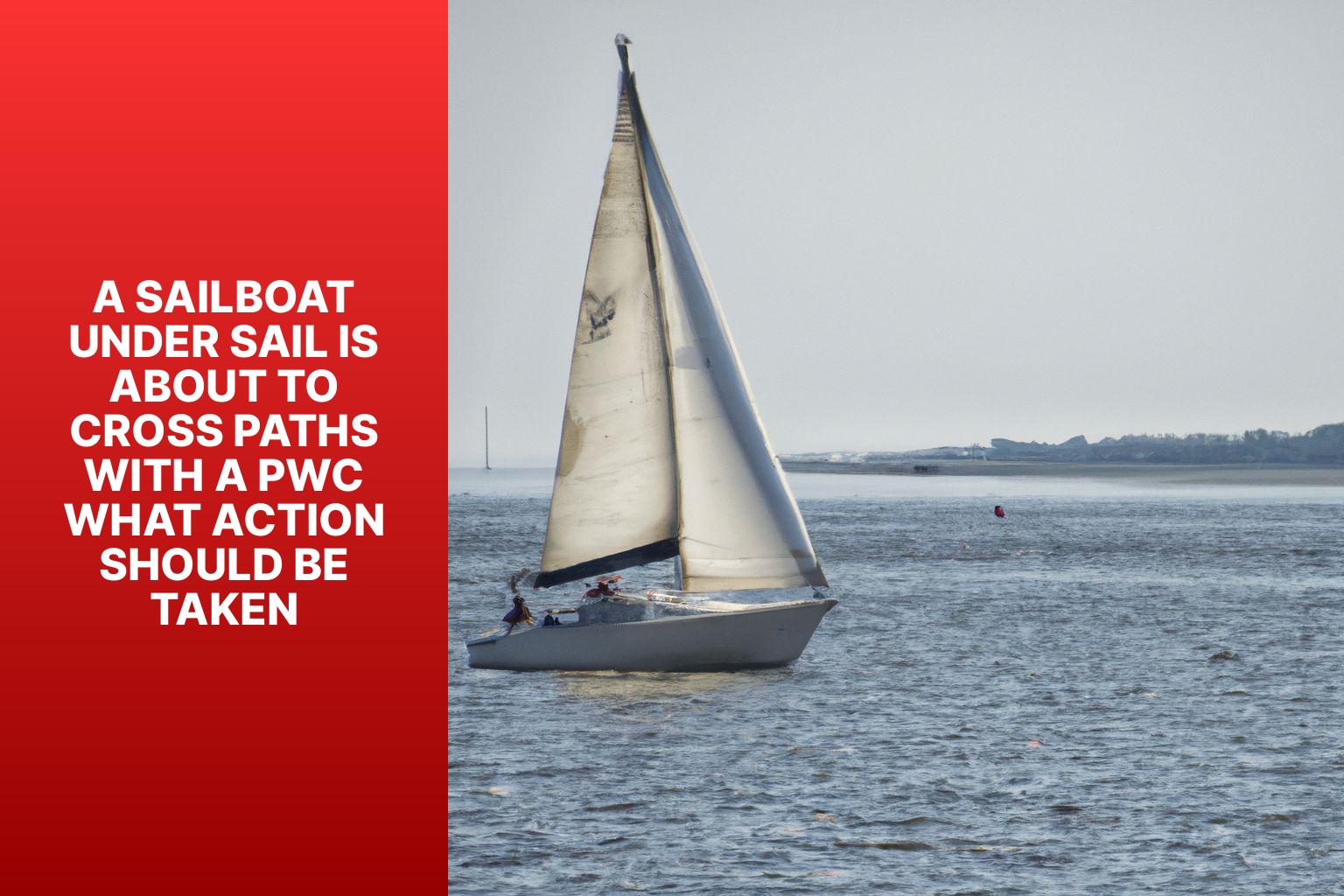
Sailing on the open water can be a thrilling experience, but it’s important to understand and follow the right of way rules to ensure everyone’s safety. This is particularly crucial when encountering personal watercraft (PWC) while sailing. Knowing the appropriate actions to take in different scenarios can help prevent collisions and accidents. Understanding right of way rules is the first step in safely navigating these situations.
Right of way refers to the privilege given to a vessel or boat to continue its intended course without interference from other vessels. It establishes the order in which vessels should yield or give way to each other. It is important to note that right of way is not always determined solely by the vessel type, but also by the specific circumstances of the encounter.
Scenarios and actions in encounters with PWCs include situations such as when the sailboat has wind on the port side and the PWC is approaching on the starboard side, or when the sailboat has wind on the starboard side and the PWC is approaching on the port side. Another scenario is when the sailboat and PWC are head-on or when they are overtaking each other. there are situations where the sailboat is crossing the PWC’s path from behind or from ahead. Each of these scenarios may require different actions to ensure a safe passage.
Taking appropriate actions in these encounters is crucial for maintaining safety. Communication with the PWC operator is important, and there are various methods to do so, such as using sound signals, navigation lights, or hand signals. Ensuring safety and avoiding collisions also involves maintaining vigilance and attention, maintaining a safe distance from other vessels, making predictable movements, and being prepared for emergency maneuvers if necessary.
By understanding right of way rules, taking appropriate actions, and prioritizing safety, sailboat operators can navigate encounters with PWCs effectively while minimizing the risk of accidents and promoting a safer water environment for everyone involved.
Key takeaway:
- Understanding Right of Way Rules is crucial: It is important to know the rules regarding right of way to ensure safe navigation and avoid collisions when a sailboat encounters a PWC.
- Taking appropriate actions based on scenarios is necessary: Different scenarios require different actions, such as understanding wind on different sides, approaching paths, head-on situations, or when overtaking or being overtaken by a PWC.
- Ensuring safety and avoiding collisions through vigilance and preparation: Maintaining a safe distance, making predictable movements, being prepared for emergency maneuvers, and using communication methods like sound signals, navigation lights, and hand signals are all essential for safety.
Understanding Right of Way Rules
When it comes to understanding right of way rules, it is crucial to have a clear comprehension of the guidelines that pertain to various situations. In the specific scenario of a sailboat intersecting paths with a personal watercraft (PWC), the sailboat generally holds the right of way . Sailboats, being classified as vessels under sail, are afforded priority over PWCs.
Ensuring a safe distance is maintained and avoiding potential collisions is of utmost importance. The sailboat should remain on a consistent course and speed, thereby allowing the PWC to maneuver around it and yield.
Comprehending right of way rules is vital for the safety of all parties involved. By familiarizing themselves with these regulations, individuals can effectively prevent accidents and navigate the waters responsibly. It is imperative to always remain attentive, communicate clearly, and show respect for the right of way of other vessels .
What is Right of Way?
Right of Way refers to the privilege one vessel has over another in a navigation situation. It is a set of rules that helps prevent collisions and ensures safety on the water. Understanding right of way is crucial for boaters to navigate effectively and avoid accidents.
The vessel with the right of way has the authority to continue its course and the other vessel must yield or take appropriate action to avoid a collision. The determination of right of way depends on factors such as the position, courses, and types of the vessels.
For example, if a sailboat under sail is about to cross paths with a PWC , the sailboat has the right of way. The PWC operator should respond by slowing down, changing course, or stopping.
It is important for boaters to be aware of right of way rules and follow them diligently to ensure a safe boating experience. By understanding and respecting these rules, boaters can prevent accidents and navigate smoothly on the water.
Who has Right of Way?
- Who has the right of way in sailing? The vessel with the wind on its starboard side .
- When two sailboats are approaching each other with the wind on different sides, who has the right of way? The sailboat with the wind on its starboard side .
- When approaching a powerboat, who has the right of way? The sailboat .
- What must the overtaking sailboat do when overtaking another sailboat from behind? It must keep clear and give way .
- When a sailboat is crossing the path of a powerboat, who has the right of way? The powerboat , and the sailboat must keep clear .
- How should two powerboats pass when approaching each other? They should pass port to port , meaning they should keep to their right side .
Scenarios and Actions
When it comes to sailing, encountering other vessels can sometimes lead to tricky situations. In this section, we’ll explore different scenarios and the actions that should be taken to ensure safe navigation. From the sailboat having wind on the port or starboard side while a PWC approaches, to head-on encounters and overtaking situations, we’ll cover it all. So, let’s dive in and learn how to navigate these scenarios with confidence and caution .
Scenario 1: Sailboat has Wind on Port Side, PWC is Approaching on Starboard Side
When encountering Scenario 1, where a sailboat has wind on the port side and a PWC is approaching on the starboard side, the sailboat must yield the right of way to the PWC. This is because, based on the right of way rules, the vessel on starboard side has precedence over the vessel on port side.
Sailboat: – Wind on Port Side – Yields right of way
PWC: – Approaching on Starboard Side – Has right of way
In this scenario, the sailboat should take appropriate action to avoid a collision. It should steer clear of the PWC by adjusting its course or speed. The PWC should continue on its course without making any abrupt changes. Both vessels must communicate and signal their intentions to ensure a safe passage.
By following these guidelines, sailors and PWC operators can navigate effectively and avoid potential dangers on the water. Always prioritize safety and adhere to the right of way rules to prevent accidents and maintain a harmonious marine environment.
Scenario 2: Sailboat has Wind on Starboard Side, PWC is Approaching on Port Side
– The sailboat , with the right of way, must maintain its course and speed. The sailboat should be alert for the approaching PWC on the port side and be prepared to take evasive action if needed.
– In order to alert the PWC of its presence and intentions, the sailboat can use sound signals, such as a short blast.
– If the PWC does not yield or change course, the sailboat should consider slowing down or altering its course to avoid a collision with the approaching PWC on the port side.
– If necessary, the sailboat should communicate with the PWC operator using hand signals to ensure mutual understanding.
– The sailboat should continue to monitor the movements of the PWC and be ready to make further adjustments in order to avoid a collision with the approaching PWC on the port side.
– In the event that the PWC persists in approaching on a collision course, the sailboat may need to execute emergency maneuvers, such as changing direction or reducing speed, to prevent a collision with the PWC that is approaching on the port side.
Scenario 3: Sailboat is Head-on with PWC
In scenario 3, when a sailboat is head-on with a PWC, it is important for the sailboat to take necessary action to avoid a collision. As per the right of way rules, the sailboat has the right of way in this situation. Therefore, the sailboat should continue on its course and maintain its speed, while closely observing the movements of the PWC.
To ensure safety and prevent a collision, effective communication between the sailboat and the PWC operator is crucial. This can be done through hand signals or sound signals if required. It is important to clearly express intentions in order to coordinate and prevent any misunderstandings.
Vigilance and attentiveness play a vital role in this particular scenario. The sailboat operator should remain focused and be ready to make necessary maneuvers to avoid a collision. It is advisable to maintain a safe distance from the PWC and make movements that are predictable.
By adhering to these guidelines and taking appropriate actions, the sailboat can safely navigate during scenario 3 when encountering a PWC.
Scenario 4: Sailboat and PWC are Overtaking Each Other
In a scenario where a sailboat and a PWC are overtaking each other, it is crucial to follow right of way rules for safety and to avoid collisions.
The sailboat, being overtaken, should maintain its course and speed.
The PWC, being the overtaking vessel, should pass the sailboat at a safe distance and keep clear.
The sailboat should use hand signals to indicate its turning direction to the PWC.
The PWC should carefully observe the sailboat and adjust its speed and course to avoid collision.
Remember, when overtaking another vessel, maintain a safe distance and communicate intentions clearly to prevent misunderstandings or accidents.
Stay vigilant and be prepared to take necessary actions for everyone’s safety on the water.
Scenario 5: Sailboat is Crossing PWC’s Path from Behind
When a sailboat is crossing a PWC’s path from behind, it is important to follow these steps:
1. Assess the situation: Determine the speed and direction of both the sailboat and the PWC to accurately assess the potential collision risk.
2. Communicate: Use hand signals or sound signals to effectively communicate your presence and intentions to the PWC operator.
3. Maintain a safe distance: It is crucial to stay at a reasonable distance from the PWC in order to avoid sudden maneuvers that could lead to a collision.
4. Monitor the PWC’s actions: Pay close attention to any changes in the PWC’s course or speed.
5. Adjust your own course: If necessary, make slight course adjustments to pass safely behind the PWC.
Pro-tip: Always prioritize safety and remain aware of your surroundings when crossing paths with a PWC from behind. Utilize clear communication and employ defensive sailing techniques to prevent accidents and ensure a smooth and secure crossing.
Scenario 6: Sailboat is Crossing PWC’s Path from Ahead
When a sailboat is crossing a PWC’s path from ahead, the sailboat has the right of way. The sailboat should maintain its course and speed, while the PWC should take appropriate action to avoid a collision.
In this situation, the sailboat has the advantage of being under sail, which makes it less maneuverable than the PWC. The PWC operator should stay vigilant and assess the situation to decide how to avoid crossing paths with the sailboat.
The PWC operator can take the following actions to ensure safety:
- Slow down or alter course: The PWC operator should reduce speed and change direction to avoid the sailboat’s path. This will create a safe distance between the two vessels.
- Communicate with the sailboat: Using hand signals or sound signals, the PWC operator can indicate their intentions to the sailboat. Clear communication helps both parties navigate the situation smoothly.
- Maintain a safe distance: The PWC operator must keep a safe distance from the sailboat. This allows both vessels to maneuver without risking a collision.
By following these guidelines, the sailboat and PWC can safely navigate the scenario of the sailboat crossing the PWC’s path from ahead.
Taking Appropriate Actions
– Taking appropriate actions is crucial when assessing the situation. Observe the trajectory and speed of both the sailboat and the personal watercraft (PWC) to determine the risk of collision.
– Use a loud and clear voice to communicate with the PWC operator about your presence and intentions, taking appropriate actions to ensure your message is heard.
– Alter the sailboat’s course to avoid the PWC, considering the wind direction and current. This is an example of taking appropriate actions to prevent a potential collision.
– Keep a safe distance between the sailboat and the PWC, taking appropriate actions to prevent accidents.
– Check the navigation rules to determine who has the right of way and act accordingly, taking appropriate actions based on this information.
– Continuously monitor the movements of the PWC to ensure its actions do not threaten the sailboat. Taking appropriate actions in response to any potential dangers.
– Slow down the sailboat if the PWC is approaching too closely or if there is a risk of collision. This is an example of taking appropriate actions to reduce the chances of an accident.
– Change course or come to a stop if the PWC continues on a collision path and does not respond, taking appropriate actions to avoid a collision.
– Stay calm and alert throughout the encounter to make informed decisions, taking appropriate actions based on the changing circumstances.
By following these steps and taking appropriate actions, you can ensure the safety of both the sailboat and the PWC, avoiding accidents or collisions.
How to Communicate with the PWC Operator?
When learning how to communicate effectively with a PWC operator while sailing, there are several important steps to follow. It is essential to use clear hand gestures to indicate your intentions, such as turning, stopping, or changing direction . Making eye contact with the PWC operator is crucial to ensure they understand your intentions.
If necessary, a whistle or horn can be used to get the attention of the PWC operator. In cases where gestures are not sufficient, a VHF radio can be utilized for verbal communication. It is important to speak clearly and concisely when using the radio, stating your intentions and requesting specific actions from the PWC operator.
In the event that the PWC operator does not respond or comply with your instructions, it is necessary to take evasive action to avoid any potential collisions. Remember, effective communication between the sailboat and the PWC operator is vital for the safety of everyone involved. By following these steps, you can minimize the risk of accidents and ensure a safe sailing experience.
Using Sound Signals
Using sound signals is crucial for communication while sailing to ensure safety and prevent collisions. It is important to remember the following key points regarding sound signals:
1. Emitting one short blast indicates that a sailboat is turning right.
2. Emitting two short blasts indicates that a sailboat is turning left.
3. Emitting three short blasts indicates that a sailboat is reversing.
4. Emitting one prolonged blast indicates that a sailboat has limited visibility.
5. Emitting five or more short, rapid blasts serves as an emergency signal for attention and distress.
It is highly recommended to familiarize yourself with the appropriate sound signals before embarking on a sailing voyage. Always remain attentive and responsive to sound signals from other vessels to avoid any accidents.
Using Navigation Lights
When sailing, using navigation lights is essential to ensure safety and avoid collisions. Here are some important points to consider:
– Understand the purpose : Navigation lights indicate the type of vessel, its position, and direction of movement. They help other vessels determine the right of way.
– Familiarize yourself with the lights : Different vessels have specific requirements for using navigation lights. Learn the specific lighting configurations for sailboats and personal watercraft (PWC) to comply with regulations.
– Ensure proper functioning : Regularly check the navigation lights for working order. Replace any burnt out or damaged bulbs. It is crucial that the lights are visible and easily identified by other vessels.
– Use navigation lights during appropriate times : Navigation lights should be used from sunset to sunrise and during restricted visibility conditions like fog or heavy rain. This enhances visibility and allows other vessels to accurately gauge your position and movements.
– Follow right of way rules: When encountering another vessel, use the appropriate navigation lights to indicate your intentions. Lighting configurations may vary depending on whether you have the right of way or need to yield to the other vessel.
– Communicate effectively : Proper use of navigation lights helps communicate your intentions to other vessels. For example, displaying the appropriate lights when overtaking or crossing paths with another vessel signals your actions and prevents misunderstandings.
By following these guidelines and using navigation lights effectively, you can ensure a safe and smooth sailing experience.
Using Hand Signals
When using hand signals while sailing, it is important to incorporate clear and effective communication with a Personal Watercraft (PWC). Here are the steps to effectively use hand signals:
– To indicate a change in course or direction, extend your arm and point in the desired direction.
– If you want to maintain your current course, hold your arm straight out to the side.
– To stop or come to a complete halt, raise your arm straight up in the air.
– If you need to turn or change course to the opposite side, extend your arm straight out to the side and then bring it across your body to the opposite side.
– To slow down or decrease your speed, lower your arm and repeatedly move it up and down in a waving motion.
By incorporating hand signals, you can ensure clear communication with the PWC operator, as they can easily see and understand the gestures. It is important to practice and familiarize yourself with these hand signals to ensure a safe and successful sailing experience.
Ensuring Safety and Avoiding Collisions
When it comes to ensuring safety and avoiding collisions on the water, being alert and proactive is key. In this section, we’ll explore the importance of vigilance and attention , maintaining a safe distance , making predictable movements , and being prepared for emergency maneuvers . By understanding and applying these principles, we can navigate the waters with confidence and minimize the risk of accidents. Let’s dive in and discover how to sail, kayak, or cruise with safety as our top priority.
Importance of Vigilance and Attention
The importance of vigilance and attention in sailing cannot be overstated. It is crucial for ensuring safety and preventing collisions on the water. Here are a few key reasons for the importance of vigilance and attention in sailing:
1. Anticipate and react to changing conditions: The importance of vigilance and attention in sailing lies in the ability to be aware of one’s surroundings and anticipate potential hazards or changes. This enables sailors to make timely and appropriate adjustments to their course or speed.
2. Identify and avoid collisions: Paying attention to other vessels and objects on the water helps sailors identify potential collision risks. By prioritizing vigilance and attention, sailors are able to take necessary actions to avoid dangerous situations.
3. Maintain safe distance: The importance of vigilance and attention in sailing ensures that sailors are aware of the distance between their own vessel and others nearby. This heightened awareness helps maintain a safe distance, preventing accidents and ensuring the well-being of all parties involved.
4. React to unexpected situations: Sailing can present unexpected situations. By being attentive, sailors are able to react promptly and effectively, mitigating risks and avoiding accidents.
5. Enhance overall situational awareness : The importance of vigilance and attention in sailing provides sailors with a comprehensive understanding of their surroundings, including the presence of other vessels, obstacles, and changing weather conditions. This heightened situational awareness helps sailors make informed decisions for safe navigation.
By prioritizing the importance of vigilance and attention, sailors can significantly reduce the chances of accidents and ensure a safe and enjoyable sailing experience for everyone involved.
Maintaining Safe Distance
Maintaining a safe distance is crucial for sailing safety. When out on the water, it is important to assess the other vessel’s speed and size. Understanding its capabilities and limitations will help you determine the appropriate distance to keep.
It is essential to consider wind and current conditions as these factors can affect maneuverability. By keeping a safe distance, you can account for any changes in direction or speed that may occur.
It is important to stay aware of the navigation channel, especially in crowded areas. Maintaining a safe distance will help you avoid collisions or interference with other boats. In order to determine the appropriate distance from other vessels, it is also important to follow right of way rules and understand who has priority in different scenarios.
Knowing your boat’s stopping distance is another important aspect of maintaining a safe distance. Take into consideration your boat’s maneuverability and stopping time when deciding how far away to stay from other vessels. A safe distance will allow for quick reactions and hazard avoidance.
Communication with other boat operators is key. Use signals or radio communication to convey your intentions and ensure clear communication. By staying vigilant and attentive, you can be aware of your surroundings and anticipate the movements of other vessels. Constantly adjusting your distance will help you maintain safety on the water.
By following these guidelines and maintaining a safe distance, the risk of collisions can be minimized, leading to a safer sailing experience.
Making Predictable Movements
Making predictable movements is essential for safe sailing and collision avoidance. To ensure this, follow these steps:
1. Take a careful look at the water for any potential hazards, such as other boats or obstacles.
2. Maintain a consistent and steady course, avoiding sudden changes in direction or speed.
3. Use clear and concise communication methods, like hand signals or sound signals, to indicate your movements to other sailors.
4. Keep an eye on the wind direction and adjust sails accordingly to maintain a steady and predictable course.
5. Always maintain a safe distance from other boats, ensuring proper clearance to prevent any collisions.
6. Adhere to right-of-way rules and yield to other boats when necessary, including giving way to boats on your starboard side and avoiding crossing paths with other boats whenever possible.
7. Stay alert and vigilant, continuously scanning your surroundings for any changes in the environment or incoming boats.
8. Be well-prepared for emergencies by familiarizing yourself with proper techniques and keeping necessary equipment readily available.
By making predictable movements, you contribute to a safer sailing experience for both yourself and others on the water.
Being Prepared for Emergency Maneuvers
To ensure safety for yourself and others aboard the sailboat, it is crucial to be prepared for emergency maneuvers . By following these steps, you can be well-equipped for any sailing emergency that may arise:
– Maintain constant vigilance to spot potential hazards and be proactive in avoiding them.
– Keep a safe distance from other vessels, allowing for quick maneuvering if necessary.
– Make predictable movements and always signal your intentions to communicate effectively with others.
– Familiarize yourself with emergency procedures such as quick turns and sudden stops, practicing them in different conditions to build proficiency.
– Understand the capabilities and limitations of your sailboat to make informed decisions during emergency situations.
– Maintain open and effective communication with your crew or passengers to ensure a coordinated response during emergencies.
– Consider taking a course on emergency maneuvers to further enhance your skills and knowledge.
– Regularly inspect and maintain your sailboat and equipment to ensure they are in good working condition.
– Create an emergency action plan for different situations, which includes clear steps to follow in case of emergencies.
By incorporating these steps into your sailing routine and consistently practicing them, you will be well-prepared for emergency maneuvers and ensure the safety of everyone on board the sailboat.
A Sailboat Under Sail Is About To Cross Paths With A Pwc What Action Should Be Taken:
- ✅ In terms of right of way, the sailboat is considered the “stand-on” vessel while the PWC (personal watercraft) is the “give-way” craft. (Source: Our Team)
- ✅ The sailboat is usually more difficult to maneuver due to its larger size. (Source: Our Team)
- ✅ This means that the PWC always has to yield and move out of the path of the sailboat when they are about to cross paths. (Source: Our Team)
- ✅ In these situations, the sailboat should maintain its course and speed. (Source: Our Team)
- ✅ There may be instances when the PWC does not yield and change course, leading to a potential collision. (Source: Our Team)
Frequently Asked Questions
Faq 1: what action should be taken when a sailboat under sail is about to cross paths with a personal watercraft.
According to the right of way rules, the sailboat is considered the “stand-on” vessel and the personal watercraft is the “give-way” craft. The personal watercraft should yield and move out of the path of the sailboat.
FAQ 2: What should the sailboat do when a personal watercraft does not yield and change course?
If the personal watercraft does not yield and a potential collision is imminent, the sailboat should sound five short blasts of the horn as a warning signal. This alerts the personal watercraft driver that the sailboat is changing its position to the starboard (right) side.
FAQ 3: Which side should both vessels pass each other on if a collision is imminent?
If the personal watercraft has not moved and a collision is imminent, both vessels should pass each other on the port (left) side.
FAQ 4: What rules should personal watercraft encounters with other personal watercrafts follow?
In encounters between personal watercrafts, they should follow the same navigation rules as motorboats and other power-driven vessels. The vessel on the operator’s left side should give way, while the vessel on the operator’s right side has the right of way.
FAQ 5: Why are collisions more dangerous for personal watercraft occupants compared to other boats?
PWCs have no enclosures or hulls to protect the operator and passengers from the impact of a collision, making them more likely to result in death. Most PWC fatalities are caused by collisions rather than drowning.
FAQ 6: How can I find the original content from Team Origin’s consolidated websites on DesperateSailors.com?
All the original content from TeamOrigin.com and TeamOriginImages.com has been migrated to DesperateSailors.com. Visitors can find the content along with additional exciting content and resources on DesperateSailors.com. If you have trouble finding certain pages or content, you can contact DesperateSailors.com for assistance.
About the author
Leave a Reply Cancel reply
Your email address will not be published. Required fields are marked *
Save my name, email, and website in this browser for the next time I comment.
Latest posts

The history of sailing – from ancient times to modern adventures
History of Sailing Sailing is a time-honored tradition that has evolved over millennia, from its humble beginnings as a means of transportation to a beloved modern-day recreational activity. The history of sailing is a fascinating journey that spans cultures and centuries, rich in innovation and adventure. In this article, we’ll explore the remarkable evolution of…

Sailing Solo: Adventures and Challenges of Single-Handed Sailing
Solo Sailing Sailing has always been a pursuit of freedom, adventure, and self-discovery. While sailing with a crew is a fantastic experience, there’s a unique allure to sailing solo – just you, the wind, and the open sea. Single-handed sailing, as it’s often called, is a journey of self-reliance, resilience, and the ultimate test of…

Sustainable Sailing: Eco-Friendly Practices on the boat
Eco Friendly Sailing Sailing is an exhilarating and timeless way to explore the beauty of the open water, but it’s important to remember that our oceans and environment need our protection. Sustainable sailing, which involves eco-friendly practices and mindful decision-making, allows sailors to enjoy their adventures while minimizing their impact on the environment. In this…
Get Busy Boating
What Should a Boat Operator Do When Approaching a PWC Head-On?
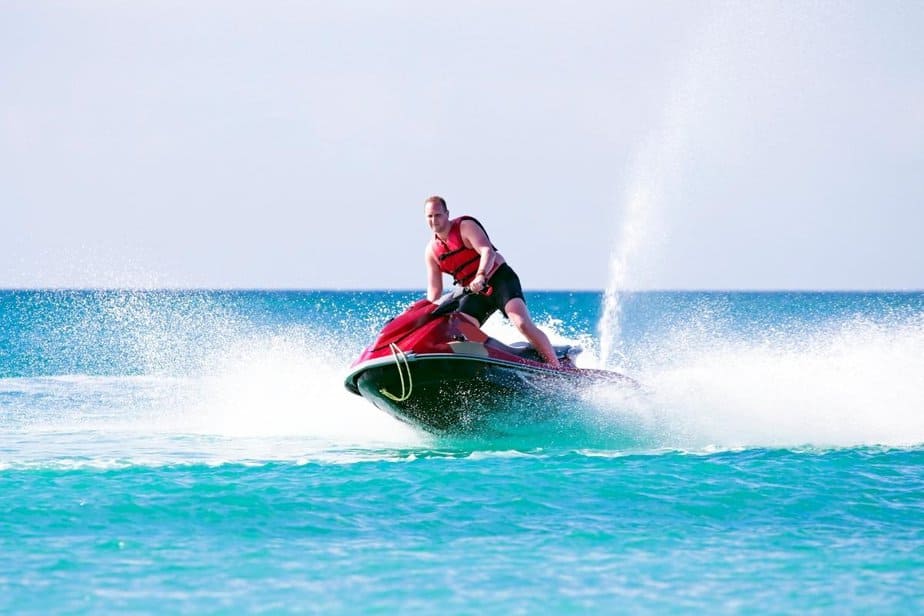
When driving your boat, if you get too near a personal watercraft (PWC), how are you supposed to handle it? In today’s article, that’s precisely what I’ll discuss.
What should a boat operator do when approaching a PWC head-on? When approaching a PWC head-on, a boat operator should turn to the right, as should the PWC operator if neither is the stand-on vessel. For less maneuverable boats such as a sailboat, the PWC operator should move to the right while you should stay your course, as they’re the give-way vessel.
This article will take you through all sorts of potential scenarios that can occur when operating a boat and how to handle them to prevent accidents and injuries for both parties. This info could just save your life, so you won’t want to miss it!
Here’s What a Boat Operator Should Do When Approaching a PWC Head-On
Let’s begin by talking more about the issue from the intro. You’re driving your boat when you see a PWC such as a jet ski in the vicinity.
There’s a good distance between you two, so neither of you slows down yet. As the seconds pass by though, it’s becoming clearer that you’re both heading for the same destination and no side has budged.
If nothing changes, you’re about to collide head-on with the PWC, which is the last thing you want. What do you do?
That depends on whether you’re the stand-on vessel or not.
Allow me to explain. A stand-on vessel is one that must maintain its speed and course while the give-way vessel can easily maneuver out of the way.
Thus, in a situation where neither your boat nor the PWC is considered the stand-on vessel, then you can both navigate to the right on your starboard side.
This will provide enough space for you to give way to the PWC and them to give way to you so that you can both avoid a collision.
Now, what about in instances where you are the stand-on vessel, such as when operating a sailboat?
Then, as mentioned before, you would maintain your speed and your course.
It’d be the PWC operator’s responsibility to know that they are the give-way vessel in this scenario and that they should move to the right.
If that doesn’t happen, then obviously, there would be a significant accident considering you never lowered your speed or changed your course. However, you would not be at fault for the accident.
What About Head-on Approaches with a PWC But at a Slower Speed? What Should a Boat Operator Do Then?
Here’s another scenario that could take place when you’re out enjoying time on the water.
You’re in your boat and you see a PWC from the distance. This time, neither of you is going at a very fast pace. Perhaps, for you at least, you’re just in the mood for a relaxing, leisurely boat ride.
You’re not sure why the PWC isn’t racing as fast as it can, but it isn’t. Maybe it’s having mechanical issues.
Nevertheless, once again, you and the PWC are approaching one another head-on, just not nearly as fast as in the first scenario. How do you handle matters this time?
This one is a lot easier. Since neither you nor the PWC operator is driving your respective vessels particularly fast, you should have ample time to navigate out of the way.
If you are the stand-on vessel and the PWC is the give-way vessel, then the rules don’t change just because you’re not boating at top speeds. They should still turn right to give you room to pass.
They can just do that well in advance because you’re not approaching head-on very quickly.
Should you be in a situation where neither is the stand-on vessel, then that makes both your boat and the PWC the give-way vessel.
You know what that means – give way! Turn right and the PWC operator should do the same.
As was the case before, due to the reduced speed you’re operating at as well as the PWC’s slower speed, moving right without any risk of a head-on collision is very much doable.
What Should a Motorboat Operator Do When Approaching a Sailing Vessel Head-On?
Now let’s switch gears and discuss a scenario that could transpire on the water and thus requires some preparation.
This time, you’re driving a motorboat, which is also known as a powerboat or a speedboat. Perhaps you’ve been driving a motorboat all this time, but in this example, that’s definitely the case.
You’re not approaching a PWC head-on this time, but rather, a sailing vessel such as a sailboat. Now what?
Well, you already know that a sailboat has less maneuverability compared to your motorboat, or at least less speed in maneuverability.
That means that between you and the sailboat, your motorboat is the give-way vessel, and the sailboat is the stand-on vessel.
The sailboat should continue on its course and not slow its speed whether it was traversing the water quickly or slowly.
You should, if you can, slow down your speed so you can safely turn to the starboard (or to the right) and avoid a head-on collision.
In any case where you’re the give-way vessel and the other boat or PWC is the stand-on vessel, you should handle the matter the same way.
The Risks of Colliding with a PWC as a Boat Operator
Operating a boat is a lot like driving. In most situations, only one boater has the right of way.
If you fail to realize that and you hit a PWC as a boat operator, here’s what could happen.
Injuries and Possible Fatalities
Your boat will not collide directly with the PWC like you might imagine in your head.
Instead, as the boat and PWC meet, the force of the collision will send your boat over the PWC and on top of it.
The boat will not go inside the PWC.
The PWC lacks enclosures, hulls, and other protective features that would safeguard it during a collision.
It’s just a boat on top of people. The operator of the PWC could be very seriously injured, as could any passengers on the PWC.
These people could also perish, and not necessarily from drowning, but from the serious injuries sustained during the collision.
Post-Traumatic Stress or Survivor’s Guilt
In the aftermath of a grisly collision between boat and PWC, you might have survived, but at what cost?
If you were the sole survivor of the collision, then you could be left to wrestle with survivor’s guilt.
Survivor’s guilt can leave you with mood changes, feelings of helplessness, anxiety, depression, sleeping difficulties (and nightmares when you do sleep), lack of motivation, mood changes, and even suicidal ideation.
You could also experience post-traumatic stress disorder or PTSD.
You might have constant flashbacks and memories of the boating accident, nightmares about it, and mood changes. You could feel hopeless, anxious, depressed, detached, or simply numb.
Physically, you might struggle to concentrate and sleep.
Both conditions are manageable with professional treatment.
What if a few people on the PWC made it out alive? Once they begin recovering from their injuries, they might decide to sue you.
That said, the other party only has a case if they can prove that you behaved negligently on the water.
If you were supposed to be the give-way vehicle but weren’t for any reason, then that could count as negligent behavior.
Usually, in these types of lawsuits, the PWC victims would sue for pain and suffering, property damage to their boat, and medical bills. You could also be sued for lost income.
Even if you can prove that you weren’t negligent in the accident, a lawsuit is the last thing you’ll want to have to deal with after a boat crash.
Cases can get dragged out for months, so you’d have this hanging over your head for quite a while.
The financial toll of a lawsuit–considering that you might have had to pay for your own medical bills as well as your own property damage–can leave you with money troubles that will outlast any injury from the collision.
Similar Posts

Boat vs. Personal Watercraft: Here’s The Difference
If you’re in the market for your first water-faring vessel, then you may wonder about the differences between…

What Causes the Most Fatalities on a Boat? You Might be Surprised!
Although you might not enjoy thinking about it, to be a safe and conscientious boat operator, you must…
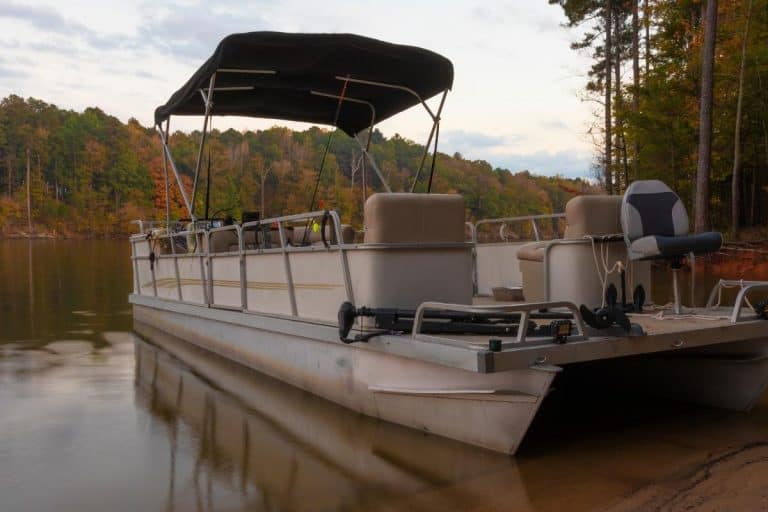
The Top 10 Reasons People Love Pontoon Boats
If you’re considering buying a pontoon boat, but you’re just not sure if it’s the right type of…
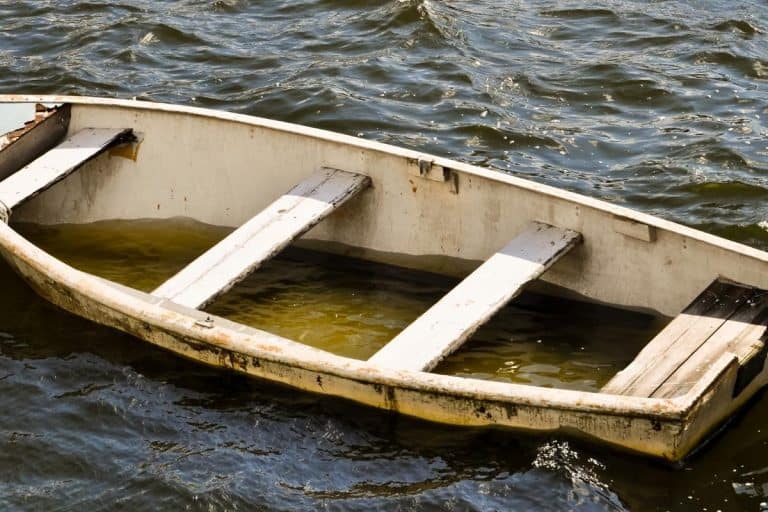
Do Jon Boats Have Drain Plugs?
A drain plug on a boat allows water to drain, but you can’t find such a plug anywhere…
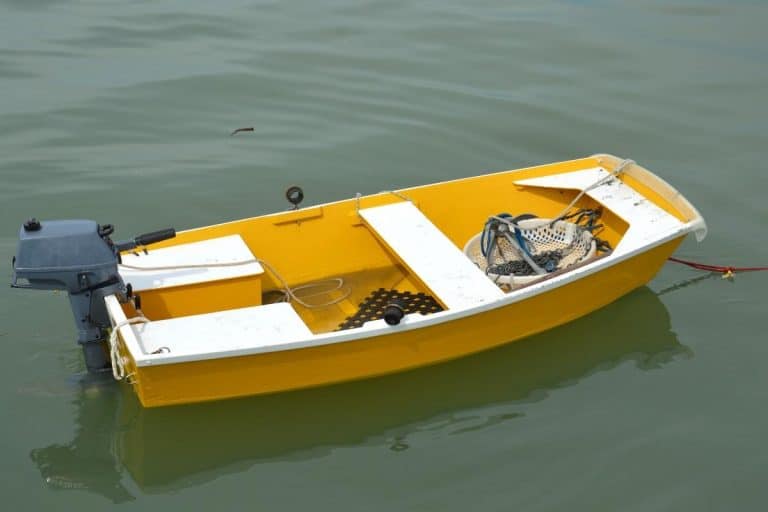
Does My Jon Boat Need to Be Registered? Rules State by State
You’ve just become the proud owner of a jon boat but are now wondering if you have to…
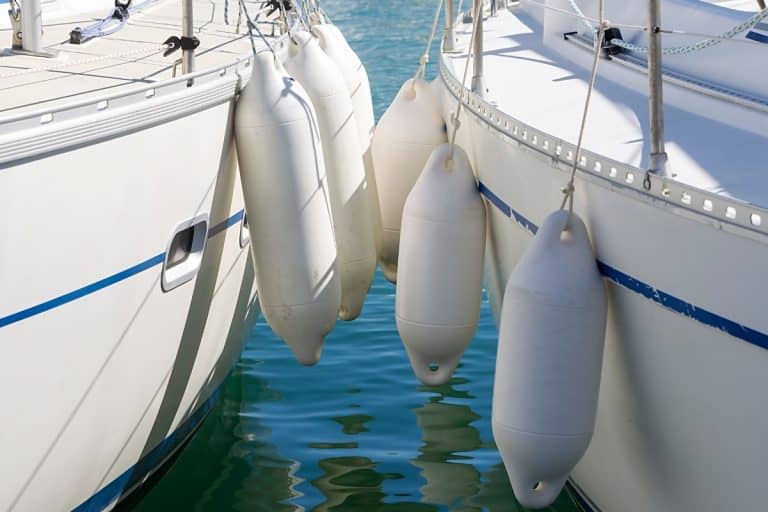
Boat Fenders And Boat Bumpers: Why Your Boat Needs Both!
Boat fenders and boat bumpers often get lumped in together, which can convince some boaters that they’re the…
Sailboat vs. PWC Head-On: Navigating the Waters with Confidence
- by Brandon Thompson
- October 22, 2023
Are you an avid sailor or PWC enthusiast? If so, you’ve probably encountered the thrilling, yet potentially challenging, situation of approaching another vessel head-on. Whether you’re steering a sailboat or a personal watercraft (PWC), knowing how to navigate this scenario is crucial for ensuring a safe and smooth journey on the water.
In this comprehensive blog post, we’ll delve into the rules and best practices for sailboats and PWCs when they meet head-on. We’ll address common questions, such as which vessel has the right of way, which side to pass on, and how to ensure a collision-free encounter. So, buckle up and prepare to gain valuable insights that will enhance your boating adventures in 2023 and beyond.
But wait, there’s more! To make it easier for you to find the specific information you need, we’ve included a list of keywords at the beginning of this post. So, whether you’re wondering about the stand-on vessel, the correct horn signals , or actions to take during an unexpected mishap, we’ve got you covered.
So, without further ado, let’s embark on this educational journey and discover what sailboats and PWCs should do when they find themselves face to face in the vastness of the open waters.

What Should a Sailboat Do When Approaching a PWC Head-On
Understand the pirates of the pwc:.
Ahoy, fellow sailors! As you navigate the vast waters on your majestic sailboat, you may encounter a peculiar vessel known as a Personal Watercraft (PWC), or as we like to call them, Pirates of the Water Currents. Now, these Pirates may seem like they just escaped from a high-energy rock concert on wheels, but fear not! With a dash of wit and a sprinkle of sailing wisdom, you can smoothly sail past them without any mishap.
Mind Your Starboard Side, Matey!
Arr, Captain! When a swashbuckling PWC comes hurtling towards your noble sailboat right on your starboard side, it’s time to take action. Stand tall and stay on course, as per maritime rules, they are required to yield to you. Keep a watchful eye and prepare for sudden maneuvers by these Pirates of the Water Currents. You never know when they might decide to recreate their favorite scene from “The Fast and the Furious” right in front of you!
Steer Clear and Show ‘Em Ye Colors!
Avast, sailors! If a PWC comes charging directly at ye head-on, it’s time to batten down the hatches and steer clear. Take evasive action by turning your sailboat to the side, allowing the speedy Pirates to pass by safely. As you make your move, don’t forget to display ye colors! No, we don’t mean your latest fashion statement; we mean using your navigational lights to communicate with these Pirates. Illuminate your starboard light, indicating you’re keeping to the right, and watch them whiz by with envy.
Speak Their Language, But Keep it Polite:
Arriving at the Pirate-infested waters where the PWCs rule their aquatic kingdom, it’s essential to learn their peculiar language. No, we’re not going to teach you how to say “Ahoy, matey” or “Shiver me timbers!” Instead, we’ll enlighten you on using horn signals. When you spot a PWC operating erratically or not following proper maritime etiquette, give a friendly (but stern) toot of your horn. It’s their cue to shape up and navigate responsibly. Remember, diplomacy in the high seas is always fashionable!
A Pirates’ Cove for Safety:
Ahoy, adventurous sailors! If you find yourself in a close quarters situation with a nimble PWC, it’s time to seek refuge in a nearby cove or marina. Don’t panic; this is just a temporary tactic to ensure the safety of all on board. Once anchored in the cove, engage in pleasant conversation with the Pirates, and kindly ask them to keep a respectful distance while passing by. A little laughter, a little charm, and a whole lot of sea wisdom can go a long way in ensuring a harmonious coexistence between sailboats and PWCs.
In the End, the Seas Belong to All:
As we bid adieu to the Pirates of the Water Currents, remember that the seas belong to all passionate sailors, no matter their vessel choice. By navigating with caution, respect, and a healthy dose of humor, we can peacefully coexist and embrace the diverse ways we explore the vast blue beyond. So, set sail, my friends, and may fair winds guide you towards unforgettable adventures on the high seas!

FAQ: What should a sailboat do when approaching a PWC head-on
Which way will the pwc go.
When a sailboat is approaching a personal watercraft (PWC) head-on, it is important to anticipate the PWC’s movement. PWCs generally have greater maneuverability than sailboats due to their smaller size and agility. However, it is difficult to predict the exact path the PWC will take. Therefore, it is crucial for the sailboat operator to remain attentive, be prepared to make corrections if necessary, and maintain a safe distance.
When a sailboat is approaching a powerboat, which one is the give-way vessel? The slower boat or the powerboat
According to maritime regulations , the give-way vessel is the sailboat, which is typically slower than a powerboat. The powerboat has the right of way and should maintain its course and speed. It is the responsibility of the sailboat operator to give way by altering their course, so as to avoid a potential collision .
What should you do when approaching another vessel head-on
When approaching another vessel head-on, both operators should take necessary precautions to prevent a collision. Communicating through sound signals, slowing down, and altering course are essential actions to avoid potential accidents. The operator of each vessel must be vigilant, make eye contact if possible, and use good judgment to ensure the safety of both parties.
Do you pass on port or starboard
When passing another vessel head-on, it is customary to steer to starboard, which means passing on the right side. This allows for a clear and predictable course of action, as each vessel will steer to their own starboard side, maintaining distance and avoiding a collision.
Who is the give-way vessel in a head-on situation
In a head-on situation, the give-way vessel is typically the sailboat or slower vessel. The faster boat, whether it’s a powerboat or a PWC, should maintain its course and speed while the slower boat maneuvers to avoid a potential collision.
What should a sailboat operator do when approaching a PWC head-on
When a sailboat is approaching a PWC head-on, the sailboat operator should be prepared to give way and alter their course if necessary. Maintaining a safe distance, monitoring the movement of the PWC, and displaying navigational courtesy are crucial to ensure a safe boating experience for all parties involved.
What should the operator of two powered vessels do when they approach each other in a head-on situation
When two powered vessels are approaching each other head-on, both operators have a responsibility to avoid a collision. This involves maintaining a safe distance, reducing speed, and altering course if needed. Effective communication through sound signals and keeping a close eye on one another are additional precautions that can contribute to a safe passage.
When a sailboat is approaching a powerboat, which one is the give-way vessel
In a scenario where a sailboat is approaching a powerboat, the powerboat is considered the give-way vessel. Sailboats generally have the right of way, and powerboats must yield by altering their course and speed to avoid any potential danger.
When reboarding a personal watercraft (PWC) after a fall, how should it be rolled
When reboarding a PWC after a fall, it is important to roll it in the direction that allows the operator to regain control and safely re-enter the watercraft. Depending on the situation and the PWC’s design, rolling it towards the operator’s side or toward the opposite side may be necessary. Prior knowledge of the specific PWC’s reboarding process is advisable to ensure a smooth and safe reentry.
What do you do when you meet a sailboat head-on
Meeting a sailboat head-on requires both operators to exercise caution and take appropriate steps to avoid a collision. It is essential to communicate through sound signals and maintain a close watch on one another. Steering to starboard, passing on the right side, is a common practice in order to safely navigate around each other.
When a powerboat meets a sailboat, who has the right of way
When a powerboat meets a sailboat, the sailboat generally has the right of way. However, it is crucial to note that each situation is unique and may require different actions. The operator of the powerboat should exercise caution, maintain a safe distance, and be prepared to give way as necessary to avoid any potential hazards.
When approaching another boat, assume that, according to the navigation rules, you are the stand-on boat. Which exception to the rules means you must give way
While it is generally advisable to assume you are the stand-on boat when approaching another vessel, there is an important exception to this rule. If you are in a head-on situation where both vessels have a risk of collision, the stand-on boat must give way by altering its course and avoiding any potential danger. Prioritizing safety over right of way in this scenario is crucial.
What action would you take if you encounter a head-on situation
If you encounter a head-on situation while boating, immediate action is necessary to prevent a collision. Both vessels should reduce speed, alter course, and signal intentions to communicate with each other. It is important to remain calm, use sound judgment, and prioritize the safety of everyone involved.
When approaching another boat head-on, you should steer to starboard and sound how many horn blasts
When approaching another boat head-on, it is customary to steer to starboard and sound two short blasts on the horn. This audible signal alerts the other vessel of your intentions and indicates that you are yielding and passing on their starboard side. Proper communication through horn blasts enhances safety and reduces the risk of misunderstandings while maneuvering.
What is the first action required of a boat operator involved in a boating accident
In the event of a boating accident, the first action required of a boat operator is to assess the situation and ensure the safety of everyone involved. Immediately provide any necessary medical aid or assistance to those in need. Once safety has been addressed, it is essential to contact the appropriate authorities and report the incident as required by local regulations.
When should a sailing vessel keep out of the way of a power-driven vessel
A sailing vessel should keep out of the way of a power-driven vessel when they are in close proximity or approaching each other. The power-driven vessel has limitations in maneuverability compared to a sailing vessel, and it is important for the sailboat to give way and allow the power-driven vessel to maintain its course and speed. This ensures a safe and seamless passage for both vessels.
What action should be taken if a motorboat and PWC are approaching head-on
When a motorboat and a personal watercraft (PWC) are approaching each other head-on, both operators should take immediate action to avoid a potential collision. Communicating through sound signals, altering course, and reducing speed are essential steps to ensure a safe passage. Maintaining a safe distance and remaining attentive are key factors in preventing accidents between these two types of vessels.
What happens if two ships are approaching each other head-on
When two ships are approaching each other head-on, it is crucial for both vessels’ operators to follow marine regulations and take appropriate steps to avoid a collision. The operators must communicate through sound signals, alter course as needed, and maintain a safe distance. This ensures the safety of the crew, passengers, and both vessels involved.

What should a motorboat do when approaching a sailboat head-on
When a motorboat is approaching a sailboat head-on, the motorboat operator should take necessary precautions to avoid a collision. The motorboat should yield to the sailboat, which typically has the right of way. Altering course, reducing speed, and maintaining a safe distance are essential actions to ensure a smooth passage and prevent any potential accidents.
What action should be taken when a sailboat is about to cross paths with a PWC
When a sailboat is about to cross paths with a personal watercraft (PWC), it is important for both operators to communicate and be aware of each other’s presence. The sailboat has the right of way in most cases, but it is advisable for both vessels to reduce speed and alter their course, if necessary, to avoid any chance of collision. Maintaining a safe distance and practicing good seamanship contribute to a safe and enjoyable boating experience.
Is Rule 14 (head-on situation) applicable to sailing vessels
Yes, Rule 14, which addresses head-on situations, is applicable to sailing vessels. Sailing vessels, like any other type of vessel, must follow this rule to prevent collisions. The concept of giving way and maintaining a safe distance to avoid any potential accidents remains the same for sailing vessels in head-on situations.
What should a powerboat do when about to cross paths with a sailboat
When a powerboat is about to cross paths with a sailboat, the powerboat should take appropriate actions to ensure a safe passage. In most cases, the sailboat has the right of way, so the powerboat operator should yield by altering their course and reducing speed. Effective communication through sound signals and maintaining a safe distance are important in preventing any conflicts and ensuring the safety of both vessels.
When a powerboat is approaching the rear of a sailboat, the powerboat is the stand-on vessel
No, when a powerboat is approaching the rear of a sailboat, the powerboat is not automatically the stand-on vessel. The concept of stand-on and give-way vessels depends on the specific situation and navigational rules in effect. Generally, the powerboat should give way to the sailboat and maintain a safe distance to avoid hazards and potential collisions.
When approaching another boat head-on, you should steer to starboard
Yes, when approaching another boat head-on, it is customary to steer to starboard or the right side. This practice allows both vessels to pass on their respective starboard sides, maintaining a clear path and reducing the risk of collision. By steering to starboard, boaters establish a predictable and safe navigation method when encountering other vessels.
- personal watercraft
- potential collision
- pwc enthusiast
- sailing wisdom
- vessel head-on
Brandon Thompson
Can i get blackheads on my nipples understanding the nitty-gritties of nipple health, does geo shatter genshin: exploring the potential of geo in elemental reactions, you may also like, the abandoned mansion demolition ranch: uncovering hidden stories of forgotten opulence.
- by Willie Wilson
- October 31, 2023
Scorpio Love Language: Where Do Scorpios Like to Be Touched?
- by Donna Gonzalez
- October 18, 2023
What Is a Hole in One Called?
- by Richard Edwards
- October 28, 2023
Why Do My Tears Taste Sweet in 2023?
- by Laura Rodriguez
- November 1, 2023
How Old is Viper from Valorant?
- by Thomas Harrison
- November 2, 2023
Did the Twin Towers Have a 13th Floor? Unraveling the Mystery Surrounding Building Floors
- October 23, 2023
Chapter 5: Navigation Rules
Navigation rules: head-on approach.
When overtaking, the rule is the vessel being overtaken has the right of way and is the stand-on vessel. When two power-driven boats meet head-on, the rules are less clear. Communication is vital in this situation.
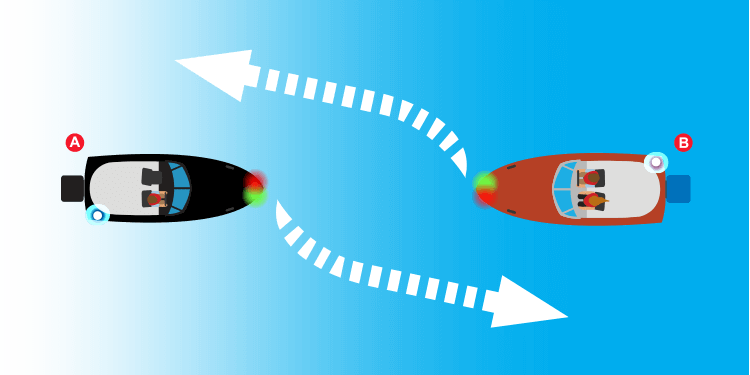
Port-to-Port:
The typical approach to this situation is to pass port-to-port. Each vessel gives one short blast indicating that they wish to pass the other vessel on their port side. Each vessel will then veer starboard, moving further from one another and passing on their respective port sides.
Starboard-to-Starboard:
Passing port-to-port is the default procedure, but if there is an obstruction or hazard both vessels may pass starboard-to-starboard. So if one wants to pass starboard-to-starboard, give two short blasts for "starboard" and the other boater should return the signal. When interacting with another vessel communication is vital.
Always communicate one's intentions and make sure one understands the sound signals!
Course Signup: Location
Privacy Policy
This privacy policy is intended to provide information to users of Boater's Academy's websites, and users of the services provided by Boater's Academy, about how Boater's Academy uses, stores, and protects information associated with such users. By using any of the websites or services of Boater's Academy, you represent and warrant that you have read and understood this privacy policy, and agree to its terms.
Effective Date Of Policy
The effective date of this privacy policy is 01/01/2018. Boater's Academy reserves the right, at any time and without notice, to add to, update, change, or modify this privacy policy by posting a new version on this page.
Information Collected By Boater's Academy
When you access Boater's Academy websites, Boater's Academy automatically gathers information that most web browsers automatically make available. This information may include IP addresses, Internet domain names, and types of devices and web browsers accessing Boater's Academy websites. Such information is anonymous and is not meant to personally identify you.
Boater's Academy websites also use cookies, which are files that are placed on your computer when you visit Boater's Academy websites. The purpose of cookies includes identifying you as a unique user of Boater's Academy websites and services, tailoring your experience on Boater's Academy websites, and enabling third-parties (such as Google) to optimize and serve advertisements to you.
If you do not wish to have cookies placed on your computer, you have several options, including: (a) not accessing Boater's Academy websites or using Boater's Academy services; (b) setting your web browser to refuse cookies; and (c) opting out of or customizing the use of third-party cookies through various websites operated by such third parties or by others (i.e., Google, Facebook, and Network Advertising Initiative). Please note that blocking or customizing the use of cookies may affect your experience on Boater's Academy websites or with Boater's Academy services.
If you decide to use certain features of Boater's Academy websites or services (such as ordering a product or service), you will be asked to provide certain personally identifiable information, which can include your name, phone number, email address, mailing address, credit/debit card number and expiration date, and social security number. You are under no obligation to provide such information, but refusing to do so may prevent your ability to use certain features of Boater's Academy websites or services.
How Boater's Academy Uses The Information It Collects
With respect to non-personally identifiable information automatically collected from you when you access Boater's Academy websites and information gathered through the use of cookies, Boater's Academy uses such information to: (1) help diagnose problems with our server and administer our websites; (2) track the usage of our websites so we can better understand who is using our websites and services and how they are using them; and (3) share with advertisers to help them better understand our services and the preferences of our customers.
Boater's Academy may combine certain demographic information obtained from you when you use certain features of Boater's Academy websites or services (such as registering or ordering a product or service) with site usage data to provide profiles, in aggregate form, about our users and their preferences. The aggregate, composite information may be shared with our advertisers.
The personally identifiable information you voluntarily provide to Boater's Academy when you decide to use certain features of Boater's Academy websites or services (such as registering or ordering a product or service) may be used for the following purposes: (1) contacting you regarding Boater's Academy's products or services, including those which you have ordered or requested; (2) billing you for the products or services your ordered or requested; (3) providing the information to third parties such as shipping companies, merchant account and payment gateway service providers, governmental entities, and our product and service distributors to the extent necessary to provide the products and services that you order or request; (4) providing the information to those who assist Boater's Academy with providing its products and services; (5) providing the information when required to do so by law or if necessary to protect the property or rights of Boater's Academy, third parties, or the public; (6) providing the information to a successor of Boater's Academy in the event of a merger, acquisition, bankruptcy, or sale of Boater's Academy's assets; and (7) providing the information to consumer credit reporting services, collection agencies, attorneys, and others in the event you fail to pay any amounts owed to Boater's Academy.
In disclosing your personally identifiable information, Boater's Academy will disclose only so much of the information as is necessary to provide the products and services that you request or order.
Security Of Information Provided To Boater's Academy
Boater's Academy takes security seriously and uses commercially reasonable safeguards to protect against the unauthorized access, use, modification, destruction or disclosure of any information you provide to us. However, Boater's Academy cannot guarantee that any information provided to us or obtained by us will not be accessed, hacked, disclosed, altered, or destroyed by unauthorized parties.
Children's Privacy
Boater's Academy does not solicit or knowingly collect personal information from children under the age of 13. If Boater's Academy obtains actual knowledge that it has collected personal information from a child under the age of 13, we will delete such information from our database. Because Boater's Academy does not collect personal information from children under the age of 13, we have no such information to use or disclose to third parties.
Parents of minors of any age may contact our Privacy Coordinator at the mailing address or e-mail address indicated below in order to: (1) access personally identifiable information Boater's Academy has collected from their child; (2) correct or modify such information; (3) request to have such information deleted; and (4) request that we no longer collect or maintain such information.
How To Request Changes To The Personally Identifiable Information We Collect
You can review and request changes to the personally identifiable information that Boater's Academy has collected from you by contacting our Privacy Coordinator at the mailing address or e-mail address indicated below.
Do-Not-Track Disclosure
Boater's Academy does not respond to "Do Not Track" signals sent by browsers.
Consent To Receive Communications
By providing your name, email, mailing address, and/or phone number to Boater's Academy, you consent to receive electronic and other communications from Boater's Academy. You may opt out of receiving electronic communications at any time by: (a) following the unsubscribe instructions contained in each communication; or (b) by contacting our Privacy Coordinator at the mailing address or e-mail address indicated below.
Third-Party Websites
Boater's Academy is not responsible for the content of websites operated by third parties to which it may provide links on Boater's Academy's websites or for the websites of advertisers. Such third parties and advertisers may also have privacy policies that are different from this privacy policy. Therefore, you should inform yourself of the privacy policies and practices of any websites of third parties or advertisers.
Contacting Us
If you have any questions about this privacy policy, Boater's Academy websites, or Boater's Academy products and services, please contact our Privacy Coordinator at the mailing address or e-mail address indicated below:
Boater's Academy Attn: Privacy Coordinator P.O. Box 5143 Virginia Beach, VA 23471 [email protected]
Terms of Use
Introduction
Welcome to Boater's Academy. This website is owned and operated by enLearned LLC. By visiting our website and accessing the information, resources, services, products, and tools we provide, you understand and agree to accept and adhere to the following terms and conditions as stated in this policy (the "User Agreement").
This User Agreement is in effect as of 01/01/2018.
We reserve the right to change this User Agreement from time to time without notice. You acknowledge and agree that it is your responsibility to review this User Agreement periodically to familiarize yourself with any modifications. Your continued use of this site after such modifications will constitute acknowledgment and agreement of the modified terms and conditions.
Responsible Use and Conduct
By visiting our website and accessing the information, resources, services, products, and tools we provide for you, either directly or indirectly (the "Resources"), you agree to use the Resources only for the purposes intended as permitted by (a) the terms of this User Agreement; and (b) applicable laws, regulations and generally accepted online practices and guidelines.
You agree that:
a. In order to access our Resources, you may be required to provide certain information about yourself (such as identification, contact details, payment information, and other information) as part of the registration process, or as part of your ability to use the Resources. You agree that any information you provide will be accurate, correct, and up to date.
b. You are responsible for maintaining the confidentiality of any login information associated with any account you use to access our Resources. Accordingly, you are responsible for all activities that occur under your account(s).
c. Accessing (or attempting to access) any of our Resources by any means other than through the means we provide, is strictly prohibited. You specifically agree not to access (or attempt to access) any of our Resources through any illegal, automated, unethical or unconventional means.
d. Engaging in any activity that disrupts or interferes with our Resources, including the servers and/or networks to which our Resources are located or connected, is strictly prohibited.
e. Attempting to copy, duplicate, reproduce, sell, trade, or resell our Resources is strictly prohibited.
f. You are solely responsible any consequences, losses, or damages that we may directly or indirectly incur or suffer due to any unauthorized activities conducted by you and you may incur criminal or civil liability for such unauthorized activities.
g. We may provide various open communication tools on our website, including but not limited to blog comments, blog posts, public chat, forums, message boards, newsgroups, product ratings and reviews, and various social media services. We do not always pre-screen or monitor the content posted by users of these various communication tools, which means that if you choose to use these tools to submit any type of content to our website, then it is your personal responsibility to use these tools in a legal, responsible and ethical manner. By posting information or otherwise using any open communication tools as mentioned, you agree that you will not upload, post, share, or otherwise distribute any content that:
i. Is illegal, threatening, defamatory, abusive, harassing, degrading, intimidating, fraudulent, deceptive, invasive, racist, or contains any type of suggestive, inappropriate, or explicit language;
ii. Infringes on any trademark, patent, trade secret, copyright, or other proprietary right of any person or entity;
iii. Contains any type of unauthorized or unsolicited advertising;
iv. Impersonates any person or entity, including any Boater's Academy employees or representatives.
We have the right at our sole discretion to remove any content that, we feel in our judgment does not comply with this User Agreement, along with any content that we feel is otherwise offensive, harmful, objectionable, inaccurate, or violates any copyrights or trademarks. We are not responsible for any delay or failure in removing such content. If you post content that we choose to remove, you hereby consent to such removal, and waive any claim against us for such removal.
h. We do not assume any liability for any content posted by you or any other third party users of our website. However, any content posted by you using any open communication tools on our website, provided that it doesn't violate or infringe on any third party copyrights or trademarks, becomes the property of enLearned LLC, and as such, gives us a perpetual, irrevocable, worldwide, royalty-free, exclusive license to reproduce, modify, adapt, translate, publish, publicly display and/or distribute as we see fit. The foregoing only applies to content posted via open communication tools, and does not apply to information that is provided as part of the registration process as part of your use of the Resources.
i. You agree to indemnify and hold harmless enLearned LLC, Boater's Academy, their parent company/companies and affiliates, and their directors, officers, managers, employees, agents, successors, assigns, and licensors (collectively, the "enLearned LLC Parties"), from and against all losses, expenses, damages and costs, including reasonable attorneys' fees, resulting from any violation of this User Agreement or the failure to fulfill any obligations relating to your account incurred by you or any other person using your account. We reserve the right to take over the exclusive defense of any claim for which we are entitled to indemnification under this User Agreement. In such event, you shall provide us with such cooperation as is reasonably requested by us.
Limitation of Warranties
The enLearned LLC Parties expressly disclaim any and all warranties, express or implied, regarding the Resources, arising by operation of law or otherwise, including without limitation any and all implied warranties of merchantability, quality, accuracy, fitness for a particular purpose, non-infringement, no encumbrance, or title, in addition to any warranties arising from a course of dealing, usage, or trade practice.
The Resources are provided with all faults, and the entire risk as to satisfactory quality, performance, accuracy, and effort is with the user.
The enLearned LLC Parties do not warrant that the Resources will fulfill any of your particular purposes or needs, or that the operation or use of the Resources will be uninterrupted or error-free. The enLearned LLC Parties disclaim all implied liability for damages arising out of the furnishing of the Resources pursuant to this User Agreement, including without limitation, mistakes, omissions, interruptions, delays, tortious conduct, errors, representations, or other defects arising out of the failure to the furnish the Resources, whether caused by acts of commission or omission, or any other damage occurring.
Limitation of Liability
In conjunction with the Limitation of Warranties as explained above, you expressly understand and agree that your potential recovery for any claim against the enLearned LLC Parties arising from or relating to the Resources or this User Agreement shall be limited to the amount you paid, if any, for use of products and/or services. The enLearned LLC Parties will not be liable for any direct, indirect, incidental, consequential or exemplary loss or damages which may be incurred by you as a result of using the Resources, or as a result of any changes, data loss or corruption, cancellation, loss of access, or downtime.
Copyrights, Trademarks, and License
Subject to your compliance with this User Agreement, the enLearned LLC Parties grant you a non-exclusive, non-sublicensable, revocable as stated in this User Agreement, non-transferable license to access the Boater's Academy websites, and to use the Resources. The Resources, including any portion of Boater's Academy websites, may not be reproduced, duplicated, copied, modified, sold, resold, distributed, transmitted, or otherwise exploited for any commercial purpose without the prior, express written consent of the enLearned LLC Parties. All rights not expressly granted in this User Agreement are reserved by the enLearned LLC Parties. Without limitation, this User Agreement grants you no rights to the intellectual property of the enLearned LLC Parties or any other party, except as expressly stated in this User Agreement. The license granted in this section is conditioned on your compliance with this User Agreement. Your rights under this section will immediately terminate if you breach, actually or potentially, in the sole judgment of the enLearned LLC Parties, any provision of this User Agreement.
Termination of Use
You agree that we may, at our sole discretion, suspend or terminate your access to all or part of our website and Resources with or without notice and for any reason, including, without limitation, breach of this User Agreement. Any suspected illegal, fraudulent or abusive activity may be grounds for terminating your relationship with Boater's Academy and may be referred to appropriate law enforcement authorities. Upon suspension or termination, your right to use the Resources we provide will immediately cease, and we reserve the right to remove or delete any information that you may have on file with us, including any account or login information.
By using or accessing Boater's Academy websites and the Resources, you represent and warrant that you have read and understood the Privacy Policy, which is incorporated by reference into this User Agreement, and agree to be bound by its terms. The Privacy Policy is available at http://boatersacademy.com/index#privacy .
Dispute Resolution, Governing Law, Attorneys' Fees
This User Agreement shall be governed and construed in accordance with the laws of the Commonwealth of Virginia without regard to its conflict of law principles.
Any and all claims, actions, demands, causes of action, and other proceedings ("Claim" or "Claims") involving you and any of the enLearned LLC Parties arising from or relating to the Resources or this User Agreement shall be heard in a court or courts of competent jurisdiction in Virginia Beach, Virginia. You hereby agree to personal jurisdiction by such courts, and waive any jurisdictional, venue, or inconvenient forum objections to such courts.
You agree that any Claim you bring against any of the enLearned LLC Parties will only be in your individual capacity and not as a plaintiff or class member in any purported class or representative proceeding.
If any of the enLearned LLC Parties initiates a Claim against you arising from or relating to the Resources or this User Agreement, the enLearned LLC Parties will be entitled to recover from you their reasonable costs and attorneys' fees incurred as a result of such Claim. If you initiate a Claim against any of the enLearned LLC Parties arising from or relating to the Resources or this User Agreement, and any of the enLearned LLC Parties prevail on such Claim, the enLearned LLC Parties will be entitled to recover from you their reasonable costs and attorneys' fees incurred as a result of such Claim.
REFUND POLICY
Refunds will only be issued in the event that you are unable to access the Resources through no fault of your own (i.e., due to an outage or other non-functionality of Boater's Academy websites) for a period forty-eight (48) hours commencing with the time that you register and pay for access to the Resources. No refunds will be issued once you receive a Certificate of Completion.
CONTACT INFORMATION
If you have any questions or comments about this User Agreement, you can contact us at:
Boater's Academy P.O. Box 5143 Virginia Beach, VA 23471 [email protected]
- 2024 BOAT BUYERS GUIDE
- Email Newsletters
- Boat of the Year
- 2024 Freshwater Boat and Gear Buyers Guide
- 2024 Boat Buyers Guide
- 2024 Water Sports Boat Buyers Guide
- 2023 Pontoon Boat Buyers Guide
- Cruising Boats
- Pontoon Boats
- Fishing Boats
- Personal Watercraft
- Water Sports
- Boat Walkthroughs
- What To Look For
- Best Marine Electronics & Technology
- Watersports Favorites Spring 2022
- Boating Lab
- Boating Safety

Right-of-Way Rules for Boaters
- By Jeff Hemmel
- April 20, 2022
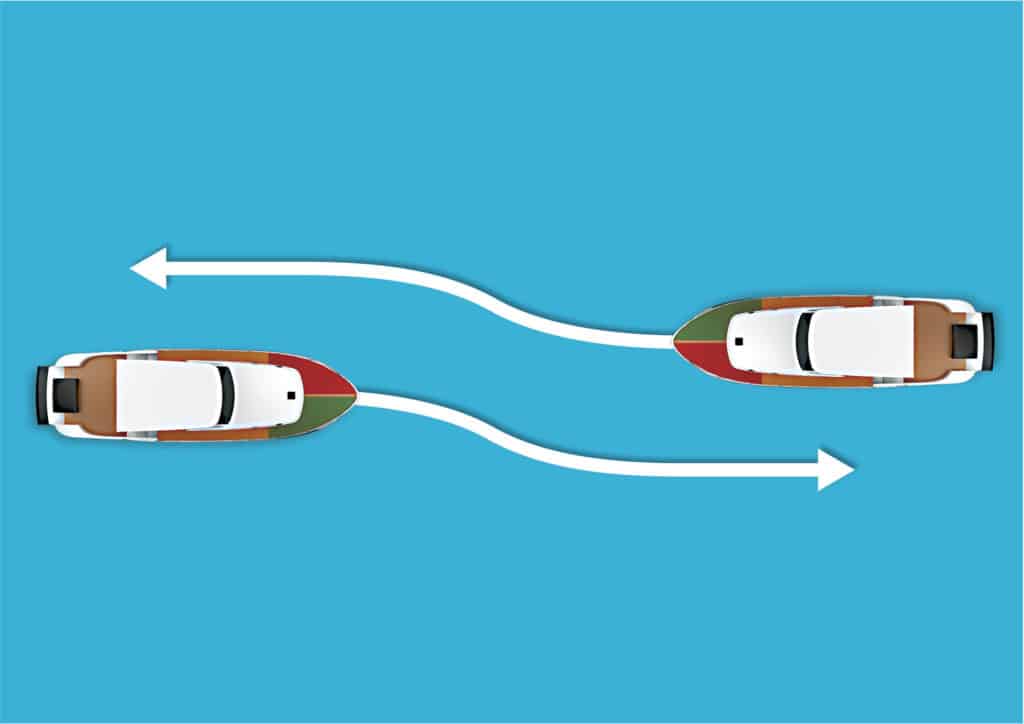
There is no right of way on the water. Every boater is obligated to do what is required to avoid collision. In any meeting of boats, one is deemed the stand-on vessel and the other the give-way vessel. The rules of the road explain the situation more completely and can be learned in a boating safety course. This article serves as a refresher and a reminder on how to handle some common meeting scenarios.
While more common in a channel or narrow pass, head-to-head meetings can happen anywhere on the water. When encountering an oncoming boat head-on, the rule is simple: Each boat is a give-way or burdened vessel and should stay to its right, altering course to starboard and allowing each craft to pass to the port (left) side of the other boat.
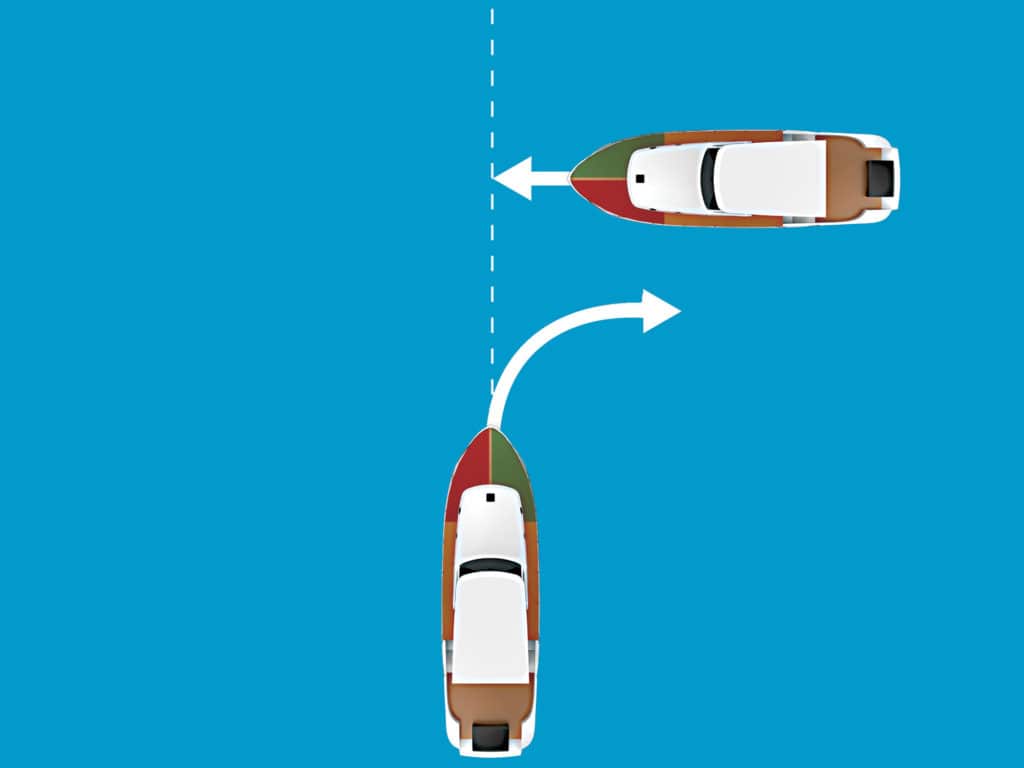
If the other boat is to your starboard (right), it’s considered the stand-on or privileged vessel and is obligated to maintain course and speed. Your boat is the give-way vessel and is obligated to slow or alter course to pass behind it, ideally. If the boat intersecting your path is to port (left), it’s the give-way vessel. It’s obligated to yield while you’re obligated to maintain course and speed.
When overtaking another boat, keep in mind that the other boat is the stand-on vessel and yours is the give-way vessel. Your first move? Determine to which side of that craft is the safest to pass. Consider oncoming traffic, waterway markers, obstacles, or even bends in the channel. Once you have a clear path with good forward visibility, increase your speed enough so that you can safely overtake the other vessel, giving the craft a wide berth.
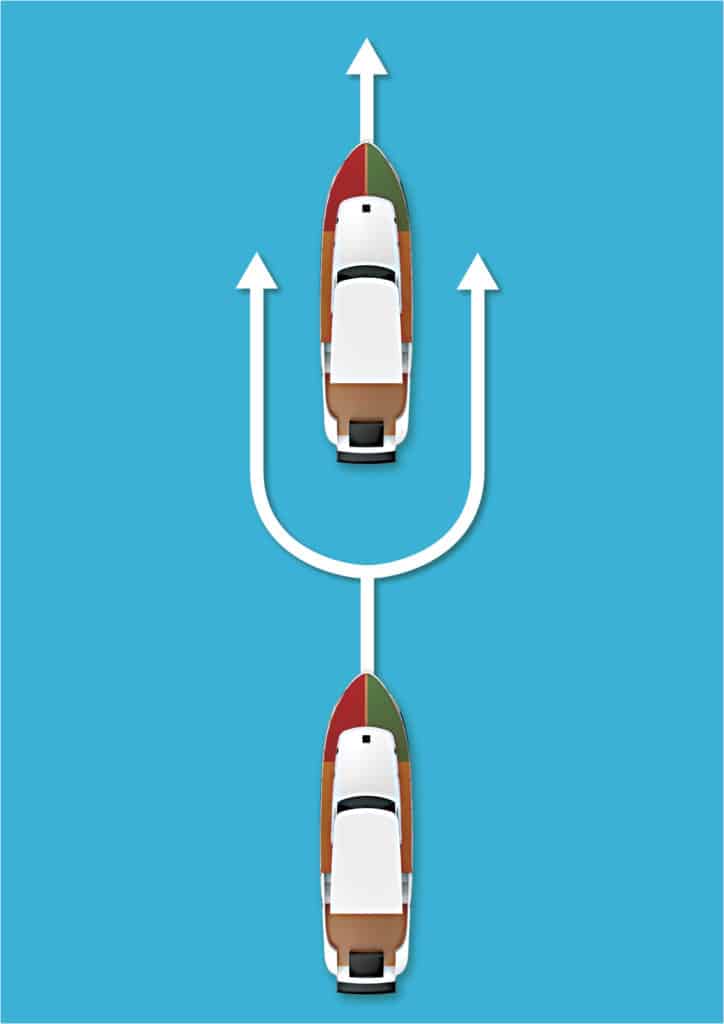
Encountering Kayaks, Sailboats, Etc.
Some vessels will almost always be the stand-on boat, and you must yield no matter the scenario, unless doing so will create an unsafe situation. Typically, this list includes paddlecraft and sailboats not under power, but it also includes larger craft, like ships or freighters. Realize these craft are not as maneuverable as most powerboats and, as such, the powerboat is deemed the give-way vessel.
Read Next: Boating Navigation Basics
When the Other Guy Doesn’t Know the Rules
No matter if you are the stand-on or give-way vessel, always be prepared in case the other boater doesn’t respond as you expect. Operate defensively, and be ready to yield, slow speed or change course to avoid any potentially dangerous situation. A good tip? Give other boaters plenty of space—100 feet or more—to allow enough time and distance to properly react and avoid an accident.
Know Your Colors
Do you know how to handle these scenarios at night, when you can’t see another boat, let alone determine its direction? Know your colors. Boats are required to display a green light to starboard (right) and a red light to port (left) at their bow, and most boats must display a single all-around white light at the stern. This combination of lights will help you determine which direction a boat is moving and if it’s likely to cross your path.
- More: Boating Safety , How-To , May 2022 , Seamanship
More How To

I Learned About Boating From This: Capsize, Rescue and Lessons Learned
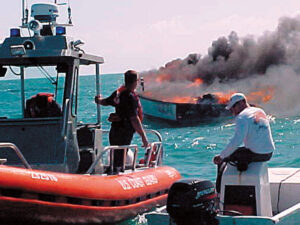
Should You Abandon Ship During a Boat Fire?
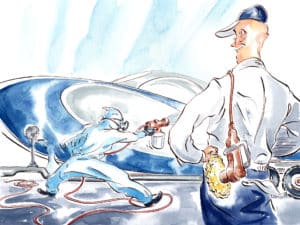
38 Top Make-Ready Tips for the Spring Boating Season
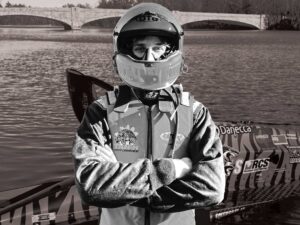
On Board With: Andrew Robbins

Boat Test: 2024 Regal 38 Surf
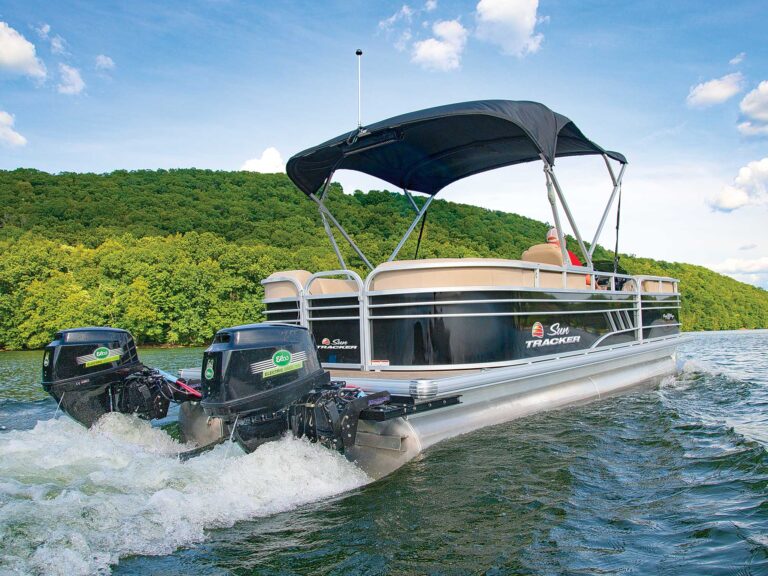
Using Hydrofoils to Improve Boat Performance
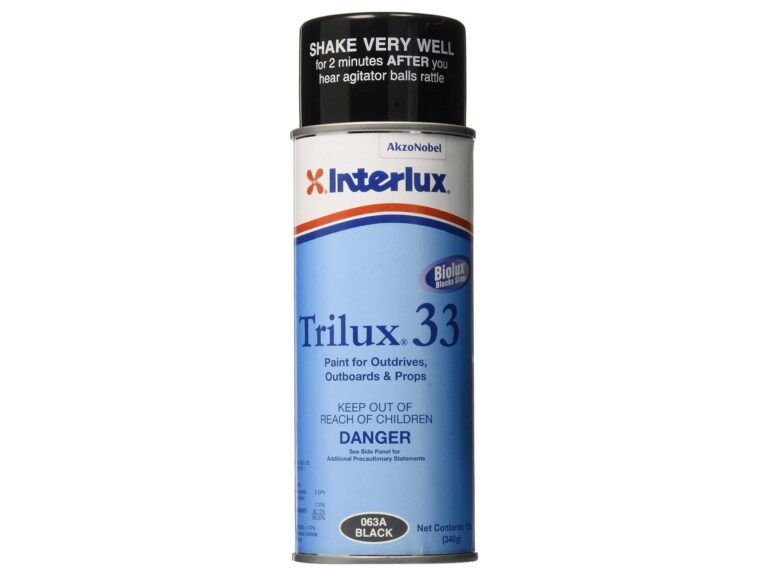
We Test Interlux Trilux 33 Aerosol Antifouling Paint

- Digital Edition
- Customer Service
- Privacy Policy
- Cruising World
- Sailing World
- Salt Water Sportsman
- Sport Fishing
- Wakeboarding
Many products featured on this site were editorially chosen. Boating may receive financial compensation for products purchased through this site.
Copyright © 2024 Boating Firecrown . All rights reserved. Reproduction in whole or in part without permission is prohibited.

- Flashlights
- Path Lights
- Bike Lights

- Safety Lights
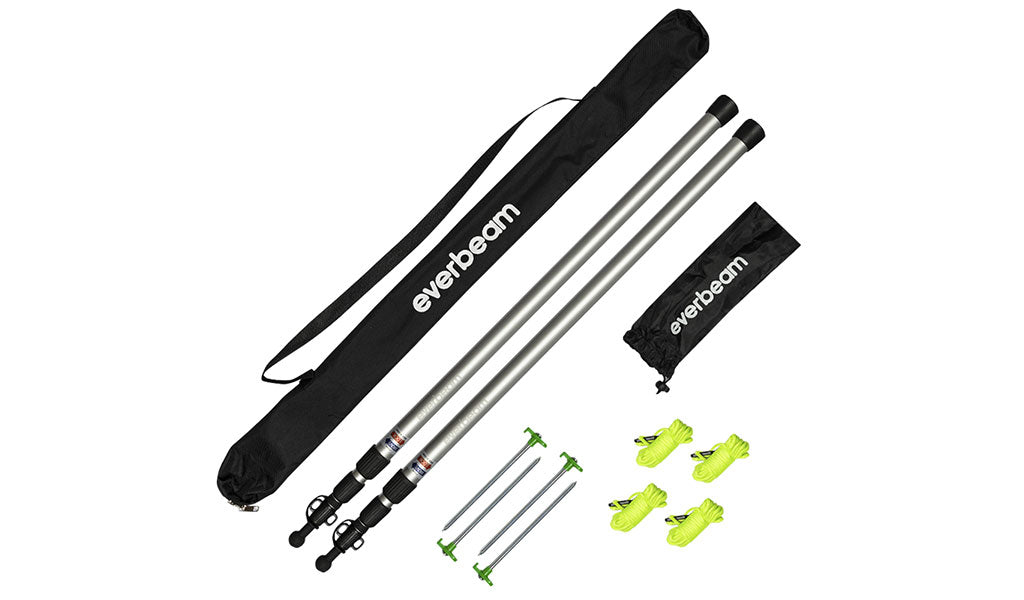
- Accessories
- Bike Cleats
May 20, 2022 7 min read
When a Sailboat Overtakes a Powerboat: Understanding the Stand-On Vessel

When a sailboat overtakes a powerboat, it can be confusing to determine which vessel is the stand-on vessel. Understanding the terminology and rules of the road at sea is crucial to avoid accidents and ensure safety on the water. In this article, you will learn about practical scenarios and safety considerations when encountering an overtaking situation, as well as answers to frequently asked questions about sailing and boating regulations.
In an overtaking situation, the overtaking vessel is the give-way vessel, while the vessel being overtaken is the stand-on vessel. However, if the powerboat is overtaking the sailboat from the starboard side, the powerboat becomes the stand-on vessel and the sailboat becomes the give-way vessel. When meeting head-on or crossing paths, the power-driven vessel is the give-way vessel, while the sailing vessel is the stand-on vessel. It is important to know these rules of the road to avoid collisions and ensure safety on the water.
Key Takeaways
- Understanding the terminology and rules of the road at sea is crucial to avoid accidents and ensure safety on the water.
- In an overtaking situation, the overtaking vessel is the give-way vessel, while the vessel being overtaken is the stand-on vessel.
- When meeting head-on or crossing paths, the power-driven vessel is the give-way vessel, while the sailing vessel is the stand-on vessel.
Understanding the Terminology
Defining stand-on and give-way vessels.
When two vessels meet, one vessel must give way to the other. The vessel that must give way is called the give-way vessel, and the vessel that has the right of way is called the stand-on vessel. In general, a sailing vessel is a give-way vessel, and a power-driven vessel is a stand-on vessel.
Boat Types and Their Characteristics
There are different types of boats , each with its own characteristics. A sailboat is a vessel that is propelled by sails and wind, while a powerboat is a vessel that is propelled by an engine. A personal watercraft is a type of powerboat that is designed for recreational use. Knowing the type of vessel you are operating is important when determining which vessel has the right of way.
Navigational Terms and Signals
Navigational terms and signals are used to communicate with other vessels. The terms port and starboard are used to describe the left and right sides of a vessel, respectively. Sound signals, such as a short blast of a horn, are used to signal your intentions to other vessels. It is important to know and understand these terms and signals to avoid collisions.
Understanding Overtaking
When a sailboat overtakes a powerboat, the sailboat is generally the give-way vessel. However, there are certain situations where the sailboat may be the stand-on vessel, such as when the powerboat is in a narrow channel or restricted waterway. It is important to be aware of your surroundings and the vessels around you to determine which vessel has the right of way in an overtaking situation.
Overall, understanding the terminology and characteristics of different vessels, as well as navigational terms and signals, is crucial in determining which vessel is the stand-on vessel when overtaking another vessel. By staying aware of your surroundings and following proper navigation rules, you can ensure a safe and enjoyable boating experience.
The Rules of the Road at Sea
General navigation rules.
When navigating at sea, it is important to follow the rules of the road to ensure the safety of all vessels. These rules are designed to prevent collisions and help vessels avoid dangerous situations. The rules of the road apply to all vessels, including sailboats and powerboats.
Meeting Head-On and Crossing Paths
When two vessels are approaching each other head-on or crossing paths, the vessel on the starboard side has the right of way. This means that the vessel on the port side must give way and take action to avoid a collision. If both vessels are on the same course and speed, the vessel on the right should maintain its course, while the vessel on the left should alter its course to avoid a collision.
Overtaking Rules and Regulations
When one vessel is overtaking another vessel, the vessel being overtaken is the stand-on vessel, and the overtaking vessel is the give-way vessel. The overtaking vessel must keep clear of the vessel being overtaken and avoid crossing its path. The vessel being overtaken should maintain its course and speed until the overtaking vessel has passed.
In an overtaking situation, the overtaking vessel should sound a signal to indicate its intention to overtake. The vessel being overtaken should also sound a signal to indicate that it is aware of the overtaking vessel. It is important to remember that the overtaking vessel has the responsibility to avoid a collision.
In summary, understanding the rules of the road at sea is essential for safe navigation. Whether you are meeting another vessel head-on, crossing paths, or overtaking another vessel, it is important to follow these rules to prevent collisions and ensure the safety of all vessels.
Practical Scenarios
Sailboat overtaking powerboat.
When a sailboat overtakes a powerboat, the sailboat is the overtaking vessel and must keep clear of the powerboat. However, if the powerboat is also overtaking another vessel, the sailboat may be the stand-on vessel and the powerboat must keep clear of both the sailboat and the other vessel.
In this scenario, it is important for the sailboat to communicate their intentions to the powerboat. The sailboat can signal their intention to overtake by hoisting a flag or using sound signals. The powerboat should respond accordingly and take the necessary actions to keep clear of the sailboat.
Powerboat Overtaking Sailboat
When a powerboat overtakes a sailboat, the powerboat is the overtaking vessel and must keep clear of the sailboat. However, if the sailboat is also overtaking another vessel, the powerboat may be the stand-on vessel and the sailboat must keep clear of both the powerboat and the other vessel.
In this scenario, it is important for the powerboat to communicate their intentions to the sailboat. The powerboat can signal their intention to overtake by using sound signals or by making a passing maneuver that is clear and safe. The sailboat should respond accordingly and take the necessary actions to keep clear of the powerboat.
Remember, in any overtaking situation, it is important to maintain a safe distance between vessels and to communicate clearly with other vessels. Always be aware of your surroundings and take the necessary actions to avoid collisions.
Safety Considerations
Avoiding accidents.
When a sailboat overtakes a powerboat, safety should be the top priority. To avoid accidents, both vessels should maintain a safe distance from each other and keep a lookout for any potential hazards. It's important to communicate effectively with the other vessel and take necessary actions to prevent any collisions.
Understanding Substantial Action
Substantial action is a term used to describe a maneuver taken by a vessel to avoid a collision. When a sailboat overtakes a powerboat, the sailboat is generally considered the give-way vessel, and the powerboat is the stand-on vessel. However, if the sailboat is overtaking the powerboat too closely, the powerboat may need to take substantial action to avoid a collision.
Effects of Speed and Wake
Speed and wake can have a significant impact on the safety of both vessels. A powerboat that is traveling too fast can create a large wake that can be dangerous for other vessels, especially smaller sailboats. Sailboats should be aware of the powerboat's speed and the size of the wake it creates, and adjust their course and speed accordingly. Additionally, sailboats should avoid sailing too close to the stern of a powerboat to avoid the effects of the wake.
Overall, when a sailboat overtakes a powerboat, safety should be the top priority. Both vessels should communicate effectively, maintain a safe distance, and take necessary actions to avoid any potential hazards. By understanding substantial action and the effects of speed and wake, both vessels can ensure a safe and enjoyable experience on the water.
Frequently Asked Questions
When is a sailboat the stand-on vessel in relation to a recreational powerboat.
A sailboat is the stand-on vessel when it is sailing and a powerboat is overtaking it from behind. The powerboat must keep a safe distance and avoid interfering with the sailboat's course.
What should you do if you are operating a motorboat that is being overtaken by a sailboat?
If you are operating a motorboat that is being overtaken by a sailboat, you should maintain your course and speed. You should not turn towards the sailboat and should give it enough room to pass safely.
What is the stand on vessel in an overtaking situation?
The stand-on vessel in an overtaking situation is the vessel being overtaken. The overtaking vessel must keep a safe distance and avoid interfering with the stand-on vessel's course.
Which boat must give-way when one boat is overtaking another?
The boat that is overtaking must give-way to the boat being overtaken. The overtaking boat must keep a safe distance and avoid interfering with the course of the boat being overtaken.
What should you do to avoid colliding with another vessel?
To avoid colliding with another vessel, you should keep a proper lookout at all times. You should maintain a safe speed and course, and be aware of other vessels in your vicinity. You should also use navigation lights and signals to communicate with other vessels.
Why should a vessel operator keep a proper lookout?
A vessel operator should keep a proper lookout to avoid collisions with other vessels and to navigate safely. By keeping a lookout, the operator can be aware of other vessels in the area, potential hazards, and changing weather conditions. This can prevent accidents and ensure the safety of all on board.

The motorboat crossing the paths with a pwc: What actions to take?
Motorboat crossing the paths with a pwc.
Meeting another boat at sea is like approaching an unmarked intersection on the road.
Just like you have to follow a set of rules when you reach a cross-section, you must follow specific rules when approaching another boat at sea. You must follow simple rules to avoid a collision.
It is essential to know what to expect when you cross paths with another vessel. When in water, there are rules to govern the action of each vessel.
Unfortunately, many vessel operators do not know the rules. Not complying with regulations can get you in trouble.
While taking a Boat Ed or boating exam, you may come across the question –
If the motorboat is crossing the paths with a PWC, what action should be taken?
The correct answer to this question is – The vessel on the left (port) hand side should be the one to give way.
Now let us read some more information on the topic.

What is a PWC?
A personal watercraft (PWC) is a recreational watercraft that uses an inboard jet drive as its primary propulsion source.
Also known as a water scooter, a PWC is designed to be operated by a person sitting, standing, or kneeling on it.
What action to take if a motorboat crossing the paths with a pwc?
If a motorboat is crossing the paths with a PWC, the vessel on the port(left) side should give way.
A PWC should be treated like a motorboat. The rules are the same for a PWC or a motorboat.
If one vessel is crossing from the port side and the other one is crossing from the starboard side, then the one crossing from the port side is the make-way vessel and must alter its speed to avoid a collision.
The vessel on the starboard side must be given time to cross first.
Related Posts:
How fast do pontoon boats go?
Best pontoon boat anchors
Safety equipment list for a pontoon boat
Best pontoon boat accessories
Who has the right of way on the water?
Every captain should know the basics about what one has to do when two boats approach each other on the water. Here are some guidelines that you must understand and follow –
- Stand-on vessel – The boats that enjoy the right-of-way are known as ‘stand-on vessels.’ The stand-on vessel can maintain speed and direction while approaching other vessels.
If you are the stand-on vessel, it is your responsibility to acknowledge the give-way vessel’s intended actions. You must maintain your speed and current course until the give-way vessel passes or you enter a dangerous situation.
- Give-way vessel – The boats that are not given the right-of-way are known as give-way vessels. A give-way vessel should take early, substantial measures to steer clear of the stand-on vessel. You must stop, alter the speed and direction of your boat to avoid a collision. If you are the give-way vessel, it is your responsibility to signal your intentions to the stand-on craft. It is also your responsibility to maneuver your boat around the other in a safe manner.
Which is the stand on vessel motorboat or PWC?
PWCs are considered to be powerboats, and the same rules apply to them. In the scenario when a PWC encounters a motorboat, these are the rules of the road that come into play –
Meeting head-on
When a PWC and a motorboat are about to meet head-on, each vessel should move to the starboard side and pass in a normal traffic pattern (Pass with the other vessel to port.)
Vessels crossing paths
When a PWC wishes to cross the path of a motorboat, the direction of the approach is the factor that determines which one has the right of way. If a motorboat approaches you from the starboard side, it has the right of way.
You must take early and substantial action to avoid the other craft. If the other vessel approaches you from your port side, you have the right of way and must maintain your speed and course.
Overtaking another boat
Overtaking another boat is legal. You can do so either on the port side or on the starboard side.
According to the Collision Regulations, the vessel intending to overtake another one on the starboard side should sound one blast of the horn.
After ensuring the starboard side is clear, the boat that has to be overtaken should respond by sounding a single blast of the horn, indicating that the overtaking boat can proceed.
If the intention is to pass on the port side, the overtaking vessel has to sound two blasts on the horn to indicate their intent.
After ensuring that the port side is clear, the vessel that has to be overtaken should respond by sounding two blasts of the horn, indicating that the overtaking boat can proceed.
What should a powerboat do when crossing paths with a sailboat?
If you are operating a powerboat, you must always give way to a sailing vessel unless the sailing vessel is overtaking your vessel.
There is a pecking order that determines the right of way for vessels of different types. Understand this list and get familiar with it.
The vessels lower on the list are the give-way vessels and must stay out of the way of the boats that are higher on the list.
1. Overtaken vessel (top priority)
2. Vessels not under command
3. Vessels that are restricted in their ability to maneuver
4. Vessels that are constrained by draft
5. Fishing vessels that are engaged in fishing, with gear deployed
6. Sailing vessels
7. Power-driven vessels
What should a sailboat operator do when approaching a PWC head-on?
The sailboat operator should maintain its current speed and the current course as it is the stand-on craft.
The motorized PWC is the give-way craft, so it should maneuver to avoid the sailboat as the sailboat lacks maneuverability. On a head-to-head collision, both vessels should pass port to port.
What do you do if you are operating a motorboat that is being overtaken by a sailboat?
If you are operating a motorboat being overtaken by a sailboat, you should keep going as you are. The vessel that is being overtaken is always the stand-on vessel.
The vessel you are overtaking is the give-way vessel, regardless of whether it is a power-driven vessel or a sailboat.
Now, let’s look at some frequently asked questions related to PWC and what actions to when motorboat crossing the paths with a pwc.
Can you consider a PWC a boat?
The US Coast Guard classifies the PWC as a Class A Inboard Boat (a boat less than 16 feet in length).
They are designed to carry up to three persons and can be operated by a person sitting, standing, or kneeling on the watercraft.
A PWC does not look like a boat but is subjected to the same laws as a yacht, and all boating licenses also work the same way.
What are the legal requirements to operate a PWC?
The legal requirements to operate a PWC include –
- A person should be a minimum of 16 years of age to operate a PWC.
- You need to wear a personal floatation device to operate a PWC.
- If you want to ride in the dark, you will need to have navigational lights.
- All operators of personal watercraft must have a Boating Safety Education Certificate in their possession.
- All operators of PWC should adhere to boating law as violating these laws can have legal consequences.
Is it safe to ride PWC at night?
It is illegal to ride a PWC at night in most states in the US. In some states, it is allowed, but you have to have to correct navigational lights installed and turned on.
However, it is not safe to drive PWCs at night as the rider can get seriously hurt. The navigational lights of the PWC can confuse the other boats, especially from a distance.
A PWC can move fast and suddenly change direction, which can confuse the other boaters at night.
Are you required to wear a PFD on a PWC?
Each person on board a PWC must wear a US Coast Guard-approved wearable Type I, II, or III PFD.
How much distance should one PWC maintain from another PWC or boat?
A PWC should maintain a distance of 50 feet from any other boat, PWC, or jet ski. A PWC should maintain a similar distance from other people in the water, stationary platforms in the water, and shorelines.
What actions to take if a sailboat under sail is about to cross paths with a PWC?
If a sailboat under sail is about to cross paths with a PWC, the PWC should change its speed and course. The power-driven vessel is the give-way vessel, and the sailing vessel is the stand-on vessel.
If two boats are traveling on paths that will cross, what determines which boat is the give-way vessel?
The answer depends on these two factors –
1. How are the vessels propelled?
- Two power-driven vessels
- Two sailing vessels
- A power-driven vessel and a sailing vessel
2. How are the two vessels approaching one another?
- Meeting head-on – the vessel operator can see another vessel ahead.
- Paths that cross- this involves a risk of collision
- Overtaking – A vessel is trying to overtake another vessel from behind.
Final thoughts on the motorboat crossing the paths with a pwc
I hope you are now familiar with all the rules and laws regarding passing, crossing, and overtaking different vessels in the water.
In this post, we have tried to answer all your questions regarding PWCs, including what to do when the motorboat crossing the paths with a pwc. We hope you find this information helpful for your boating exams.
Related posts:
How to Run a Boat HIN / HULL ID Check Instantly
Where is the Best Place to Store a Fire Extinguisher on a Boat?
A boat is towing two skiers at the same time. How long should the tow lines be?
Can you ski behind a pontoon boat?
Motorboat And A PWC Are Approaching Head-On: What Action Should Be Taken?
When you meet another vessel on the sea, it is necessary that you know what to do in order to prevent an accident. Just as it is with road safety rules and regulations, navigating the ocean also requires certain guidelines.
Being well informed of these guidelines is necessary so as to be prepared upon encountering another vessel at sea. Many craft operators are ignorant of these guidelines. That is why it is important you know them, so as to avoid unnecessary mishaps.
When A Motorboat Encounters A PWC, What Is The Next Step To Take?
This is a common exam question for those who take the Boat Safety Education course. The answer to this is that each vessel should veer off to its right side, speed up, keep its course until they are very close by, and then the vessel coming from the left (port) side should reduce its speed and give way for the other vessel coming from the right (starboard) side to pass on.
Motorboat And A PWC Are Approaching Head-On, What Action Should Be Taken?

Some Guidelines For Encountering Other Vessels On The Water. There are a few essential rules the captain of every vessel should know, in order to expertly navigate the waters.
The vessels with right-of-passage
These are also called stand-on vessels; These are vessels that keep their speed and do not alter their direction when they come in contact with another vessel at sea.
They must act in accordance with the rules assigned to stand-on vessels until the intersection is passed, except a precarious situation presents itself.
The give-way vessels
These are vessels that have to stand by; reduce their speed and alter their directions when they come across another vessel at sea. They come from the port or left side of the intersection.
When an interaction occurs, these vessels are to adhere to the rules that are assigned to vessels that give way, and send a signal to the other vessel to proceed, while looking for a way to safely navigate around the oncoming craft.
Should A PWC Give Way For A Motorboat?
When a PWC & a motorboat meet, there are certain rules to follow; This is because a PWC is often regarded as a motorboat hence, the rules that apply to motorboats are also applicable to them. These rules are:
- In the occurrence of a PWC & a motorboat meeting, since they are both motorboats, they are both to move to their individual right sides, and pass by each other according to regular traffic rules.
- If an event occurs, such that a PWC seeks to cut across the path of an oncoming motorboat, two things take place. First, if the PWC is coming from the right side, then it is by rule allowed the right of passage, and therefore should stay its course and speed.Whereas, if it’s coming from the port side, which is the left side, then it has to reduce its speed, send a signal to the oncoming craft to pass on, and safely find a way to navigate around the other boat.
Precautions To Take Upon Encountering A Sailboat At Sea.
If your craft is a PWC or a motorboat, then, when you come across a sailboat on the sea, it is according to rules that you make way for them, especially when they plan to overtake your boat.
There are some guidelines that point out which vessel has the right of passage and which doesn’t. Keep these guidelines always on your mind when at sea.
On this list, vessels listed near the top have the right of way, while those nearer the end of the list have to give way for other vessels to pass by.
- A vessel that wants to overtake.
- A vessel that is unmanned.
- A craft that cannot be easily maneuvered.
- Draft-constrained crafts
- Fishing boats containing fishing equipment
Precautions For Sailboats When Encountering A PWC
The sailboat should continue on its course. It has the right of passage, and therefore, the oncoming PVC should slow down its speed, change direction and find a way to successfully navigate around the sailboat. This is because; the sailboat cannot be easily maneuvered like the PWC.
If navigation around the sailboat is impossible, the crafts should go by each other, port-side to port-side
Action Steps For Powerboat Operators When A Sailboat Signifies Interest To Overtake.
Whenever a vessel is about to be overtaken by another craft, the vessel doing the overtaking has the right-of-way, while the other vessel has to stand back and ease off on its speed.
So, as an operator of a powerboat that is about to be overtaken by a sailboat, you should ease off on your speed, and make way for the overtaking vessel to pass on.
Can The PWC Be Regarded As A Vessel?
According to the U.S Coast Guard, the PWC is a “Class A” Inboard Boat. These crafts are smaller than sixteen feet length-wise and are meant to accommodate just three passengers.
It does not have the physical features of a regular boat, but it is operated by the guidelines of a yacht and has the same boating licenses as other vessels.
Criteria For Operating A PWC
Before operating a PWC, there are some requirements to take note of.
- The intending operator should be no less than sixteen years old.
- A life jacket is compulsory for all occupants of the PWC.
- Navigation lights are an absolute must for night rides.
- Before you can drive a PWC, you must be certified by Boating Ed, that is, Boating Safety Education.
- All intending PWC operators should know the Boating rules and regulations and strictly follow them. Failure to do so attracts legal repercussions.
More About PWC
PWC is the abbreviated version of the name, Personal WaterCraft. This craft is often used as a means of recreation and is propelled by an inboard-jet drive. It is also called a water scooter and one can operate it either by kneeling, sitting, or standing on it.
Is It Advisable To Take A PWC For Night Rides?
The answer to this is, No. This is applicable for most states within the United States. But in the remaining states, you can actually take a PWC out on night rides, but you must have your navigator light turned on.
That is a top requirement. Driving a PWC at night, however, is a dangerous venture, as there are higher chances of someone getting hurt, most especially the PWC’s operator.
This is because, due to the PWC’s speed and easy maneuverability, it can easily and swiftly change direction and its headlights can be a source of confusion for other oncoming vessel operators.
See Also: What should you do to Reduce the Risk of Capsizing or Swamping your Boat in Rough Water?
Do You Need A PFD While Abroad A PWC?
Yes, you do. Before boarding a PWC, you need to have an approved U.S. Coast Guard wearable. Be it a Type One, Two, or Three PFD.
What Is The Safest Distance Allowed Between A PWC And Other Crafts?
Fifty feet is the safest. For whatever boat type it encounters on the water. The same thing goes for people as well as stationary objects in the water.
When A Sailing Sailboat Encounters A PWC And There’s An Intersection Of Paths, What Is The Necessary Course Of Action?
A sailboat that encounters a PWC, while on a sail, is to carry on and not change direction or speed.
This is because it has the right of way as the stand-alone vessel. The PWC has to reduce its speed, change direction and find a way to maneuver around the sailboat.
When Two Vessels Are About To Cross Paths, What Are The Right Procedures To Follow?
For two boats about to cross paths on the waters, there are various factors that determine which boat has to give way, and which boat gets to stand-alone, that is, proceed without any change in course or direction. These factors are:
What kinds of vessels are they? Are they both power-driven? or both are sailboats? Or one is a sailboat while the other is a motorboat?
From which direction are they approaching each other? There are three ways vessels encounter each other on the water.
One, it could be a head-on encounter, whereby there is another craft coming directly in front. Two, it could be that one boat is cutting across the path of the other.
Three, it could be that one vessel is about to overtake the other. Whichever way the vessels encounter each other on the waters, the rules remain the same:
Vessels approaching from the starboard side have the right of passage while the other stands down. Easily maneuvered crafts give way to unmanned, bigger, or restricted vessels.
Read Also: In Areas Of Heavy Boat Traffic, How Can The Operator Reduce The Chances Of A Collision?

Ever wondered how you can have a cruising boat without getting into financial problems? The answer is here. That is the reason why we set up this blog to share with you, safety tips, answers to questions that have to do with fishing and hunting. You are going to love it!
Hey! I am Armstrong!
Leave a Comment Cancel reply
Save my name, email, and website in this browser for the next time I comment.
- Work & Careers
- Life & Arts
Become an FT subscriber
Limited time offer save up to 40% on standard digital.
- Global news & analysis
- Expert opinion
- Special features
- FirstFT newsletter
- Videos & Podcasts
- Android & iOS app
- FT Edit app
- 10 gift articles per month
Explore more offers.
Standard digital.
- FT Digital Edition
Premium Digital
Print + premium digital.
Then $75 per month. Complete digital access to quality FT journalism on any device. Cancel anytime during your trial.
- 10 additional gift articles per month
- Global news & analysis
- Exclusive FT analysis
- Videos & Podcasts
- FT App on Android & iOS
- Everything in Standard Digital
- Premium newsletters
- Weekday Print Edition
Complete digital access to quality FT journalism with expert analysis from industry leaders. Pay a year upfront and save 20%.
- Everything in Print
- Everything in Premium Digital
The new FT Digital Edition: today’s FT, cover to cover on any device. This subscription does not include access to ft.com or the FT App.
Terms & Conditions apply
Explore our full range of subscriptions.
Why the ft.
See why over a million readers pay to read the Financial Times.
International Edition

IMAGES
VIDEO
COMMENTS
In 2019, a sailboat and a PWC encountered each other on a windy day in a busy waterway. The sailboat operator, operating at proper speed and distance, noticed the approaching PWC, slowed down, and kept a safe distance to avoid collision. The PWC operator also adjusted speed and course accordingly. Both vessels communicated through hand signals ...
Effective communication between sailboat operators and PWC operators is key to avoiding collisions. Sailboat operators should use visual and audible signals to alert PWC operators of their presence and intention to avoid a collision. Some effective communication methods include: 1. Make Noise/Use Horn or Whistle.
In scenario 3, when a sailboat is head-on with a PWC, it is important for the sailboat to take necessary action to avoid a collision. As per the right of way rules, the sailboat has the right of way in this situation. Therefore, the sailboat should continue on its course and maintain its speed, while closely observing the movements of the PWC. ...
PWC Encountering PWC. It is extremely important that a PWC encountering another PWC follow the same navigation rules that apply to motorboats or any other power-driven vessel. Most fatalities involving a PWC result from injuries caused by collisions and not from drowning. The operator and passengers ride on top of the PWC instead of down inside it.
When approaching a PWC head-on, a boat operator should turn to the right, as should the PWC operator if neither is the stand-on vessel. For less maneuverable boats such as a sailboat, the PWC operator should move to the right while you should stay your course, as they're the give-way vessel. This article will take you through all sorts of ...
What Should a Sailboat Do When Approaching a PWC Head-On Understand the Pirates of the PWC: Ahoy, fellow sailors! As you navigate the vast waters on your majestic sailboat, you may encounter a peculiar vessel known as a Personal Watercraft (PWC), or as we like to call them, Pirates of the Water Currents. Now, these Pirates may seem like they ...
Glossary. give-way vessel. The vessel that is required to take early and substantial action to keep out of the way of other vessels by stopping, slowing down, or changing course. stand-on vessel. The vessel that must maintain its course and speed unless it becomes apparent that the give-way vessel is not taking appropriate action; if you must ...
Navigation Rules: Head-On Approach. When overtaking, the rule is the vessel being overtaken has the right of way and is the stand-on vessel. When two power-driven boats meet head-on, the rules are less clear. Communication is vital in this situation.
Meeting. While more common in a channel or narrow pass, head-to-head meetings can happen anywhere on the water. When encountering an oncoming boat head-on, the rule is simple: Each boat is a give-way or burdened vessel and should stay to its right, altering course to starboard and allowing each craft to pass to the port (left) side of the other ...
If you are overtaking a vessel, remember that you are the give-way vessel until well past, and safely clear of, the passed vessel. Do not cut in front of, impede or endanger another vessel. Boat behind: "I intend to pass you on your starboard side" - 1 short blast (1 sec.) Boat behind: "I intend to pass you on your port side" - 2 short blasts.
Sailing Vessel - Any vessel under sail alone. Remember, if being propelled by a motor, a sailboat is considered to be a powerboat. ... The main situations of collision risk are overtaking, meeting head-on, and crossing. When one of two vessels is to keep out of the way (give-way vessel), the other, the stand-on vessel, must maintain course and ...
In an overtaking situation, the overtaking vessel is the give-way vessel, while the vessel being overtaken is the stand-on vessel. However, if the powerboat is overtaking the sailboat from the starboard side, the powerboat becomes the stand-on vessel and the sailboat becomes the give-way vessel. When meeting head-on or crossing paths, the power ...
In the scenario when a PWC encounters a motorboat, these are the rules of the road that come into play - Meeting head-on. When a PWC and a motorboat are about to meet head-on, each vessel should move to the starboard side and pass in a normal traffic pattern (Pass with the other vessel to port.) Vessels crossing paths
Pull your boat away from the ramp to prepare it for the drive home. ... A motorboat and a PWC are meeting head-on. Which one is the stand-on vessel? neither. Two boats are operating near each other. One of these boats must take early and substantial action to keep well away from the other boat. Which is the boat that must take action?
A sailboat and a PWC are meeting head-on. Which one is the stand-on vessel? sailboat PWC neither both. sailboat. One boat is overtaking another. Which boat should stand on? the boat being overtaken the boat creating the most wake the faster boat the larger boat. the boat being overtaken.
2 people found it helpful. Eku. The sailboat is a stand-on vessel. PWCs are power-driven and fast, and therefore, the sailboat is a stand-on. If the sailboat is also power-driven, then both vessels should avert the directions. Other exceptions may include the depths, and hazards present in the situation. Advertisement.
According to the International Regulations for Preventing Collisions at Sea (COLREGS), a sailboat has the right of way over a personal watercraft (PWC) in head-on situations. The sailboat is considered the stand-on vessel and the PWC is the give-way vessel, meaning the PWC should yield and alter its course to avoid a collision.
What should the boat on the starboard (right) do? Maintain course and speed, but stay alert. A motorboat and a PWC are meeting head-on. Which one is the stand-on vessel? Neither. One boat is overtaking another. Which boat must give way? The boat that is overtaking.
You're the PWC at the bottom of the screen, encountering another PWC. start. Unit 2 of 6. Topic 3 of 7. Page 17 of 23.
Which is the give-way boat? Right off, we apply the rule that a power-driven boat is the give-way vessel and the sailboat, under sail that is, should stand on. But if the sailboat is under power, then it's treated like any other power-driven boat. Which brings us to scenario two: powerboat versus powerboat, head-on.
In the occurrence of a PWC & a motorboat meeting, since they are both motorboats, they are both to move to their individual right sides, and pass by each other according to regular traffic rules. If an event occurs, such that a PWC seeks to cut across the path of an oncoming motorboat, two things take place. First, if the PWC is coming from the ...
The vessels are shown closer to each other than they should be when actually encountering another vessel on the water. Meeting Head-On: The power-driven vessel is the give-way vessel. The sailing vessel is the stand-on vessel. Paths That Cross: The power-driven vessel is the give-way vessel. The sailing vessel is the stand-on vessel. Overtaking ...
Study with Quizlet and memorize flashcards containing terms like What should the operator of powerboat A do if powerboat B begins to cross on the starboard (right) side? a. Speed up and maintain present course. b. Give way by slowing down and changing course. c. Turn sharply to port (left). d. Speed up to pass in front of powerboat B., A motorboat and a PWC are meeting head-on.
PwC's US election rules set limits on using partner meetings and electronic communications to campaign so that the race would not distract from the normal operations of the business.